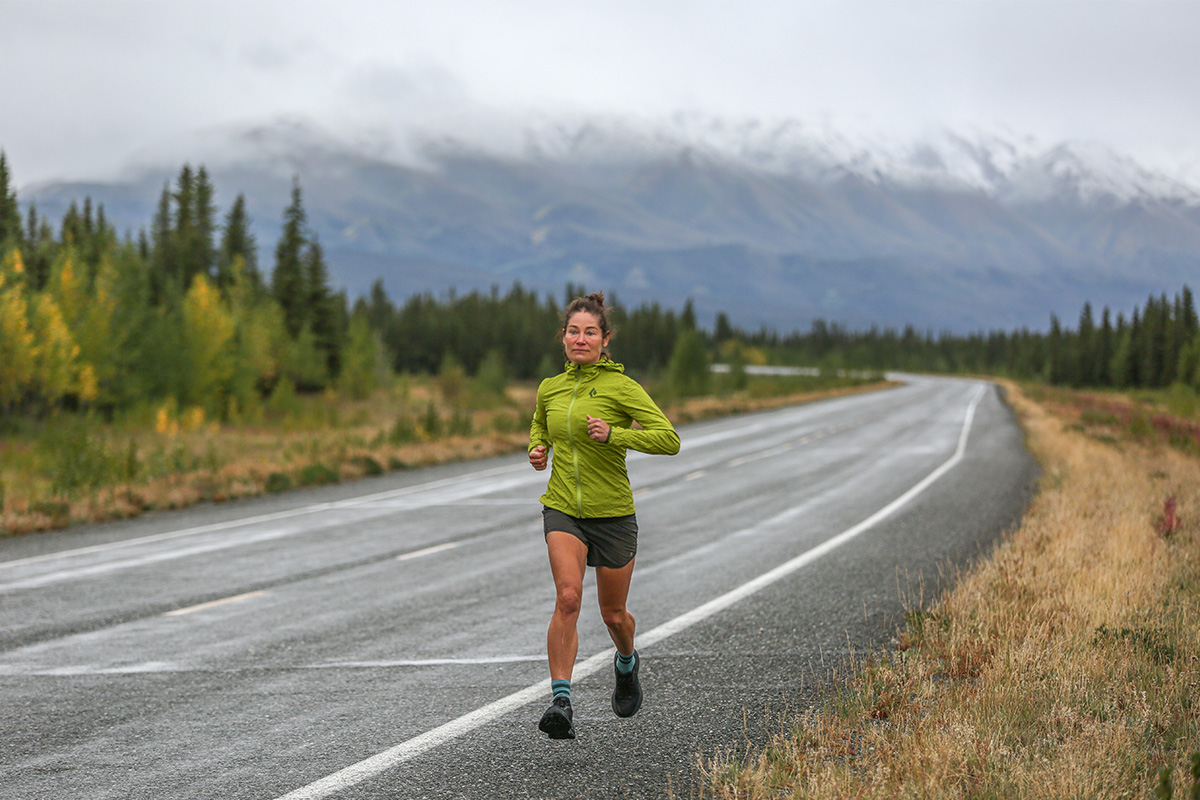
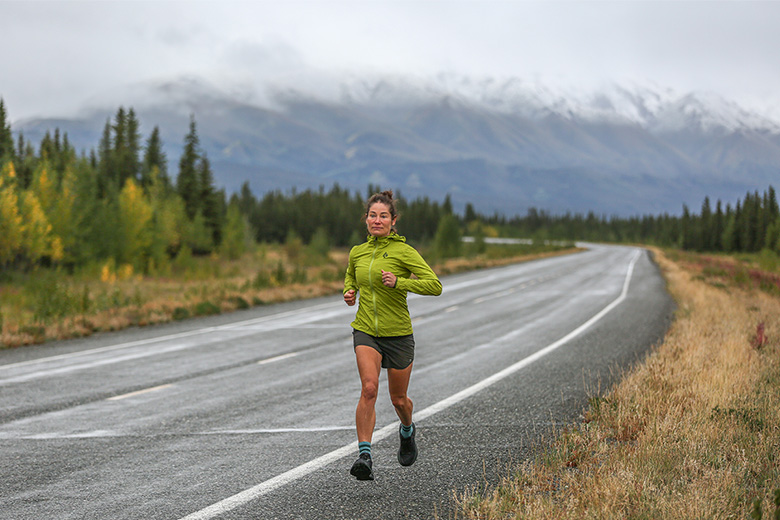
Running is among the most approachable forms of fitness, requiring only a pair of quality shoes to get you going. But the sport’s widespread popularity has led to a dizzying array of shoe brands, styles, and available features. Below we break down our favorite runners, which cover everything from cushioned long-distance models to durable daily trainers and ultralight kicks for serious racing. We tested these shoes in a variety of different conditions—from 50K races to endless tempo training runs—to truly test their mettle. After months of research and hundreds of miles pounding the pavement, we narrowed in on our streamlined list of 15 worthy models below. For more background information, check out our comparison table and buying advice below the picks, along with details about our testing process. And for off-road excursions, see our article on the best trail running shoes.
Editor's note: We updated this guide on May 7, 2025, to swap several shoes to the latest versions, including the Brooks Ghost, Brooks Launch, Hoka Bondi, Hoka Clifton, Altra Torin, and On Cloudsurfer. Spring is the season of testing new releases, so we'll continue to update this guide with our feedback on the latest and greatest.
 Category: Daily training
Category: Daily training
Weight per pair: 1 lb. 4.2 oz.
Cushioning: 37mm (heel)/27mm (forefoot)
What we like: Versatile, comfortable, and efficient for everything from one-mile repeats to recovery runs.
What we don’t: A little lacking in breathability; slightly heavier than the prior version.
Our top pick of the year—Brooks' Ghost 17—is a versatile everyday training shoe that works as well for tempo runs as it does for recovery runs and hill climbs. The 17 comes with more midsole cushioning (37/27 for the 17 compared to 35/23.5 for the 16), adding height and spring with the DNA Loft v3 midsole. The latest design did add just over an ounce from the 16 (1 lb. 4.2 oz. compared to 1 lb. 3 oz.), but the difference is nominal considering the extra cushion. The drop also decreased from 12 millimeters to 10 millimeters—more aligned with a standard road shoe. Brooks uses a strong rubber for the outsole for improved durability, and we've noticed no degradation on our test models. They did a nice overhaul to the upper design, too, including a robust but flexible mesh upper that's still nicely padded through the tongue and heel collar. Overall, we experienced a very natural stride with an energetic liftoff and well-cushioned landing in our testing of the Ghost.
We don't have many complaints about the Ghost 17's performance, and we were happy to have a less extreme drop from the 16's 12-millimeter heel-to-toe difference, which some runners found clunky and tippy underfoot. We will say these shoes don't breathe super well in hot weather, although the upside is that the mesh upper is pretty hardwearing and abrasion-resistant. Overall, this versatile shoe performs well for a variety of paces, distances, and terrain—and we certainly don't mind the freshly modernized look—keeping it in our top spot for 2025.
See the Men's Brooks Ghost 17 See the Women's Brooks Ghost 17
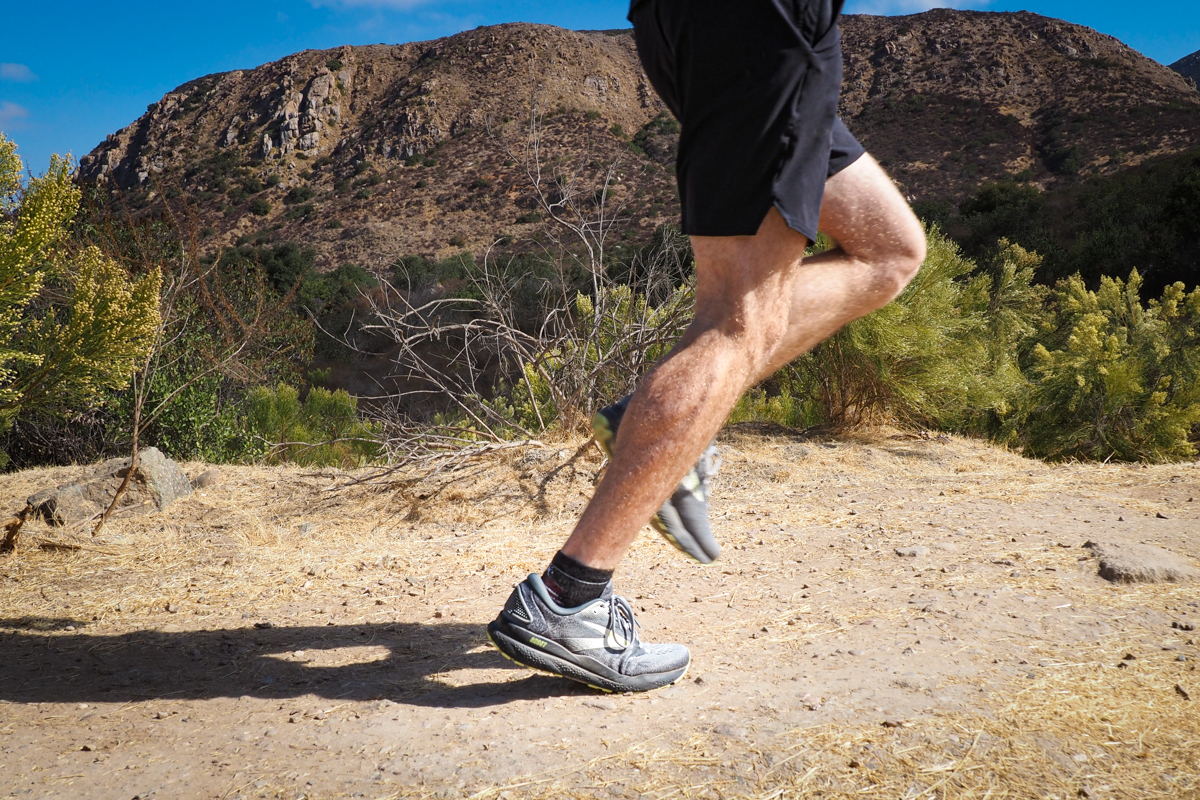
 Category: Daily training
Category: Daily training
Weight per pair: 15.4 oz.
Cushioning: 35.5mm (heel)/27.5mm (forefoot)
What we like: Great quality and durability for less than many competitors.
What we don’t: Not a standout in breathability; not our first choice for long runs, and a bit narrow around the midfoot.
We generally steer clear of "budget" shoes, but the Brooks Launch 11 has impressed us on multiple fronts while undercutting most competitors by at least $20. The latest update shaved just over an ounce from the 10 (15.4 oz. compared to 1 lb. 0.6 oz) but did increase the price by $10, making it less of a steal. Brooks also tweaked the drop and the outsole stack, adding to the midsole under both the heel and toe and decreasing the drop from 10 to 8 millimeters for a slightly more stable stride. While not the most responsive midsole foam, the lightweight DNA cushioning with foot-mapped density offers decent energy return without excess bulk, making each stride feel relatively effortless. Combined with a snug-fitting mesh upper that's more breathable than past models, the shoe offers a surprisingly nimble feel that’s well suited for quick-paced runs. They also added more robust RoadTack rubber to the outsole this year, which should hold up better than previous versions.
All that said, the Launch 11 isn't without downsides. First, the mesh upper is relatively stiff out of the box and requires some breaking in. It's also still a little lacking in breathability, although like the Ghost above, the advantage is that it holds up well over time. Additionally, some long-distance runners found the prior version's padding a bit lackluster on extended outings, particularly on harder surfaces. The 11's added underfoot cushioning will likely help, but we still think the shoe is best suited for shorter to mid-distance training runs. Finally, it's worth noting that wide-footed runners may find the toe box a bit narrow, especially around the midfoot. If the fit works for you, the latest Launch strikes us as very well rounded for the price.
See the Men's Brooks Launch 11 See the Women's Brooks Launch 11
 Category: Daily training
Category: Daily training
Weight per pair: 1 lb. 4.2 oz.
Cushioning: 37mm (heel)/27mm (forefoot)
What we like: Excellent cushioning and good energy return.
What we don’t: Tall stack height is a little polarizing.
Maximum-cushioned shoes have taken the running world by storm over the past several years, and we've become big fans. Among the myriad options, Saucony's well-padded Triumph 22 strikes an excellent balance between comfort and energy return, effectively reducing fatigue on recovery days while feeling springy and responsive during tempo runs. In sum, you get great impact absorption without losing momentum from too much "squish." From tempo runs to casual afternoon jogs and longer weekend outings, the Triumph has quickly earned a spot front and center in our closet.
Part of the reason these shoes have so much cushioning without feeling bogged down is Saucony's proprietary "PWRRUN PB" midsole. This beaded foam is made from a blend of PEBA polymers and touted as having better energy return and durability than standard EVA foam while also weighing less. While it's hard to substantiate these claims, we came away impressed by the shoes' nimble and sprightly personality in testing. It's true that the tall stack height won't be for everyone, and the Triumph does cost a bit more than competitors like the Brooks Ghost 17 above and Hoka Clifton 10 below (both $150). But if a cushy and responsive ride is what you're after, the Triumph 22 certainly has a lot going for it.
Read more: women's Saucony Triumph 22 review
See the Men's Saucony Triumph 22 See the Women's Saucony Triumph 22
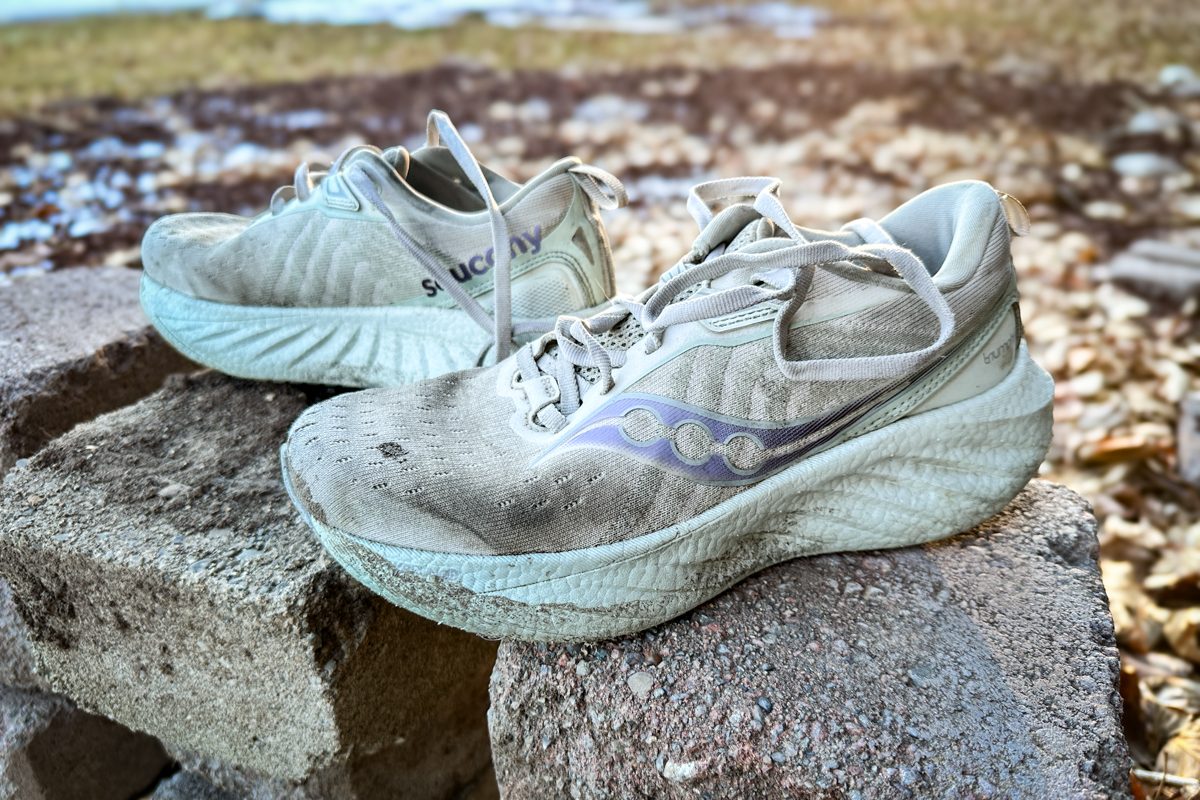
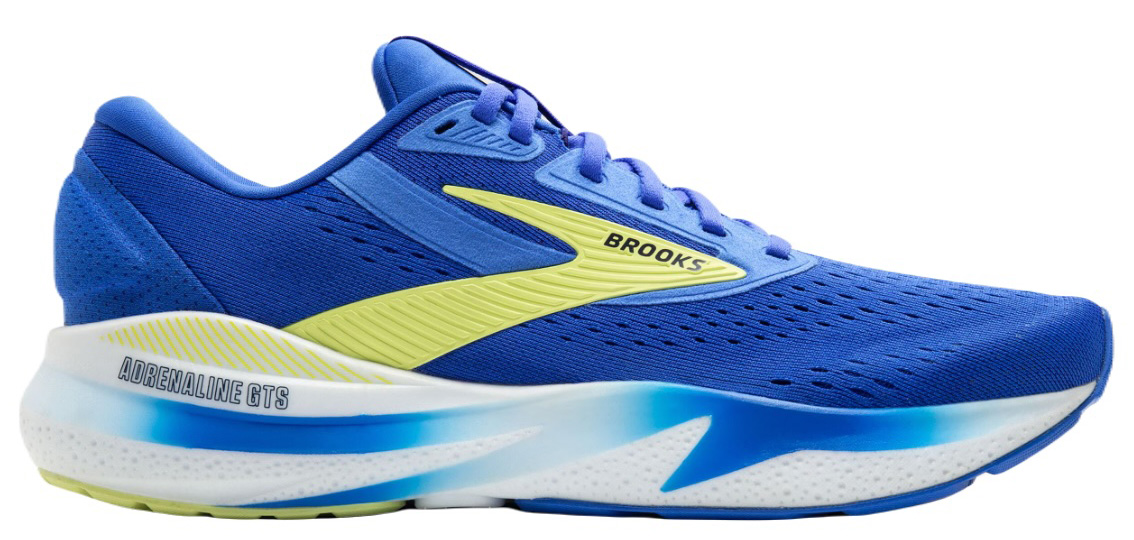 Category: Daily training
Category: Daily training
Weight per pair: 1 lb. 4.0 oz.
Cushioning: 35.5mm (heel)/23.5mm (forefoot)
What we like: A well-rounded stability shoe that's great even for those who aren't prone to overpronation.
What we don’t: Not the lightest or most modern design.
The Brooks Adrenaline surprised us—in a good way. This stable, versatile shoe feels a bit like old-fashioned road runners but notably lighter and peppier. Designed for stability (the GTS stands for "Go-To Support"), even our non-pronating tester liked the added structure and subtle medial post that's intended to correct excessive inward movement. We were also impressed by the shoes' all-around comfort, including great shock absorption and more substantial collar padding than what you get with alternatives like the On Cloudsurfer and Hoka Bondi below.
As far as drawbacks go, the Brooks Adrenaline—like most stability shoes—is a little heavier than some competitors due to its added structure and support, although it's still competitive with the likes of Brooks' own Ghost 17 (1 lb. 4.2 oz.) above and many others below. The design is also a little dated in both look and feel, and it falls into a bit of an in-between spot—for those looking to cover long distances, we'd recommend checking out the lighter Hoka Clifton; for race day, something like the Nike Alphafly will offer far better energy return. But this is telling: We found ourselves reaching for the Adrenaline over and over due to its well-rounded traction and comfort on a wide range of surfaces. For a deeper dive on stability shoes, check out our buying advice section below.
See the Men's Brooks Adrenaline GTS 24 See the Women's Brooks Adrenaline GTS 24

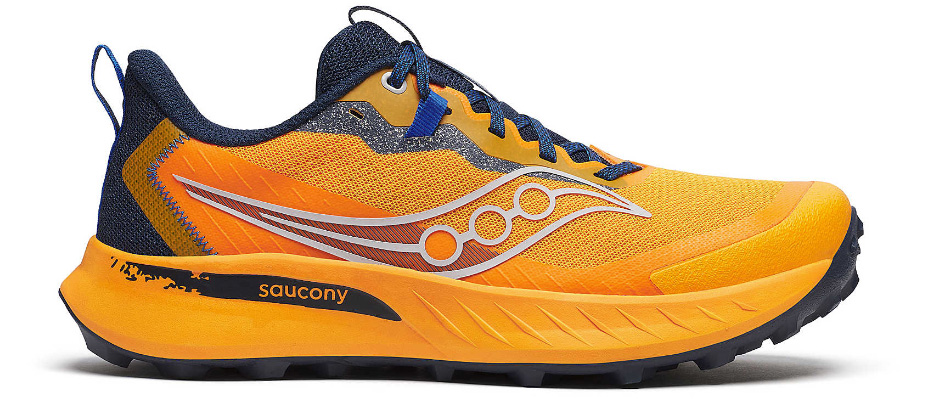 Category: Trail
Category: Trail
Weight per pair: 1 lb. 3.4 oz.
Cushioning: 28mm (heel)/24mm (forefoot)
What we like: A versatile trail shoe that can be worn comfortably on any terrain.
What we don’t: A little stiffer than we'd prefer and doesn't really loosen up over time.
The perennial favorite Peregrine is an excellent choice for a range of terrain and run lengths, with some of the best traction of any shoe we tested. We had confident foot plants on climbs, and the deep lugs allowed for fast, fun downhills. We wouldn't call this a particularly well-cushioned shoe (especially compared to Saucony's own Triumph above and Hoka's Bondi and Clifton below), but the 28-millimeter heel stack was enough to keep us feeling fresh and bouncy without deadening the stride sensation. Plus, the minimal, 4-millimeter drop allowed our feet to land naturally and find a good rhythm. Overall, the Peregrine does a lot of things well and makes a great crossover option for runs that involve a mix of pavement, gravel, and dirt.
What's not to love with the Saucony Peregrine? For one, they aren't the most comfortable shoes we tested and felt quite stiff during the initial break-in period. While they did loosen up some over time, the rigidity didn't go away entirely. What's more, sharp turns caused the shoe to tilt to one edge of the sole, which didn't help with the lack of forgiveness. Finally, while overall breathability is decent, the Asics Novablast 5 below and Saucony Triumph 22 above feel less "built up" and kept our feet cooler. But if you're looking for a shoe that has enough durability and protection for trail use without feeling too laggy on the road, the Peregrine strikes a really nice middle ground.
See the Men's Saucony Peregrine 15 See the Women's Saucony Peregrine 15
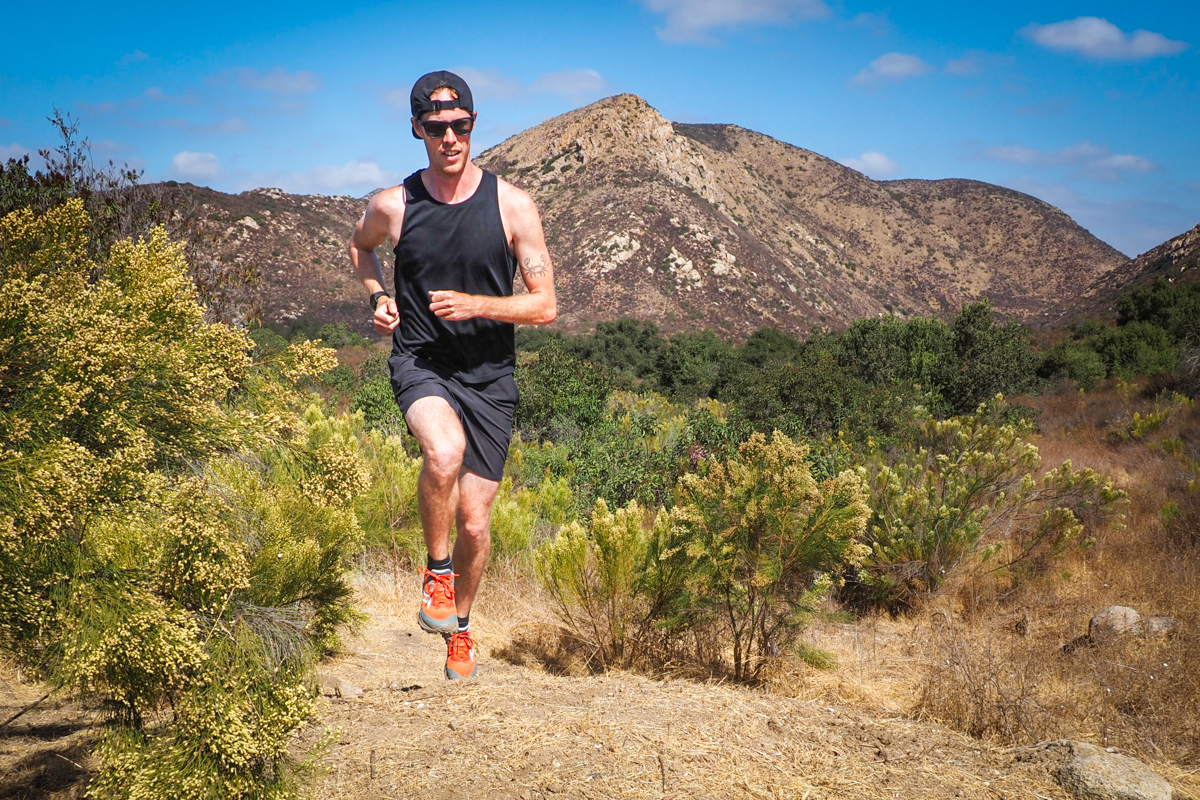
 Category: Daily training
Category: Daily training
Weight per pair: 1 lb. 5.0 oz.
Cushioning: 42mm (heel)/37mm (forefoot)
What we like: A true pillow for your feet and surprisingly spry.
What we don’t: Not the fastest or most stable ride; on the heavier end.
When you picture a Hoka shoe, chances are the maximalist Bondi is what comes to mind. The most cushioned shoe in Hoka's lineup, the Bondi 9 provides a whopping 42 millimeters of padding at the heel and 37 millimeters at the forefoot, resulting in class-leading impact absorption with every step. Like many runners, we’ll admit that we were initially skeptical of the Bondi’s polarizing appearance—that is, until we hit the pavement. After a very short acclimation period, the Bondi proved to be an incredibly comfortable ride at our slow-and-steady pace—great for recovery runs and keeping nagging injuries at bay—and even felt surprisingly agile at speed. In fact, we loved it so much that we found ourselves frequently reaching for the Bondi over our more aggressive flats.
If there's one shoe that feels like walking on a cloud, this is it. But while the Bondi 9 is surprisingly well rounded, it’s important to acknowledge that max-cushioned shoes have some inherent limitations. Some runners will find the oversized platform decidedly unstable, and the taller stack height and limited ground feel mean less stability when turning or pivoting. Further, at 1 pound 5 ounces for the pair, the Bondi 9 is on the heavier side, so don’t expect to be setting any course records. But for a shoe that will absorb most of the road’s impact before it hits your foot, we have very little to complain about.
See the Men's Hoka Bondi 9 See the Women's Hoka Bondi 9
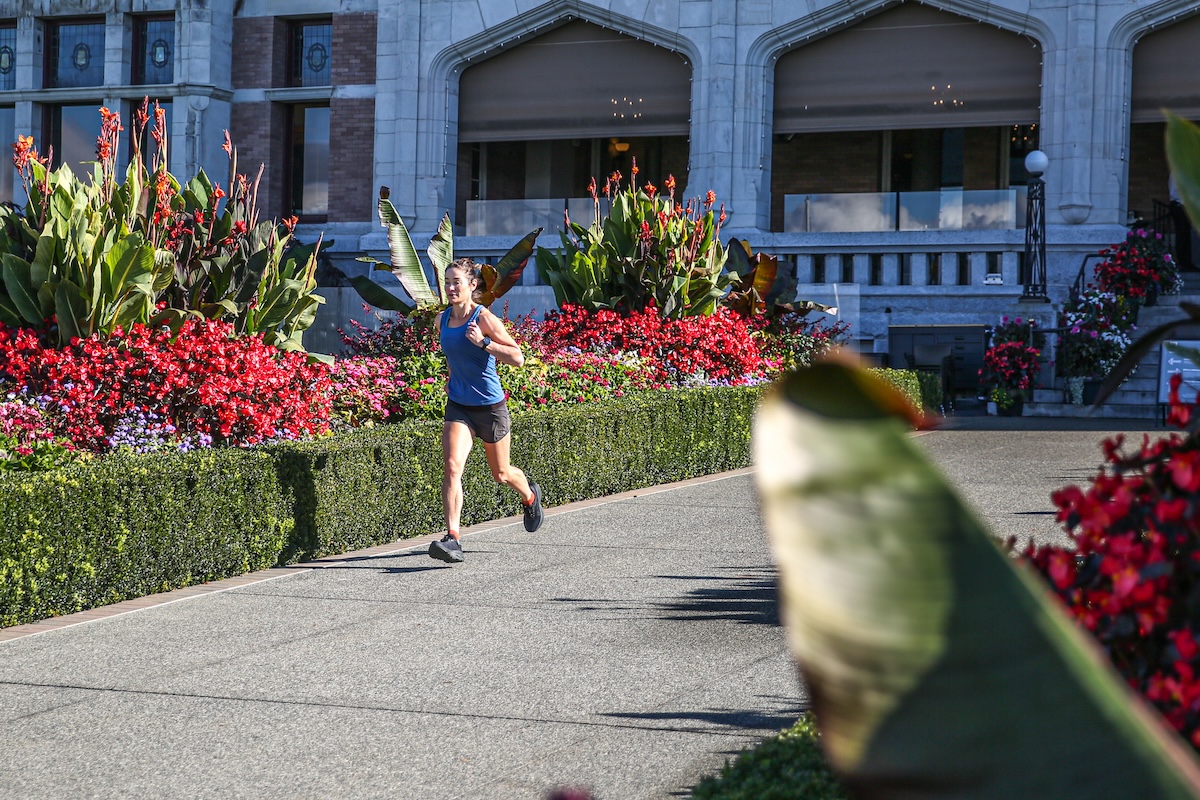
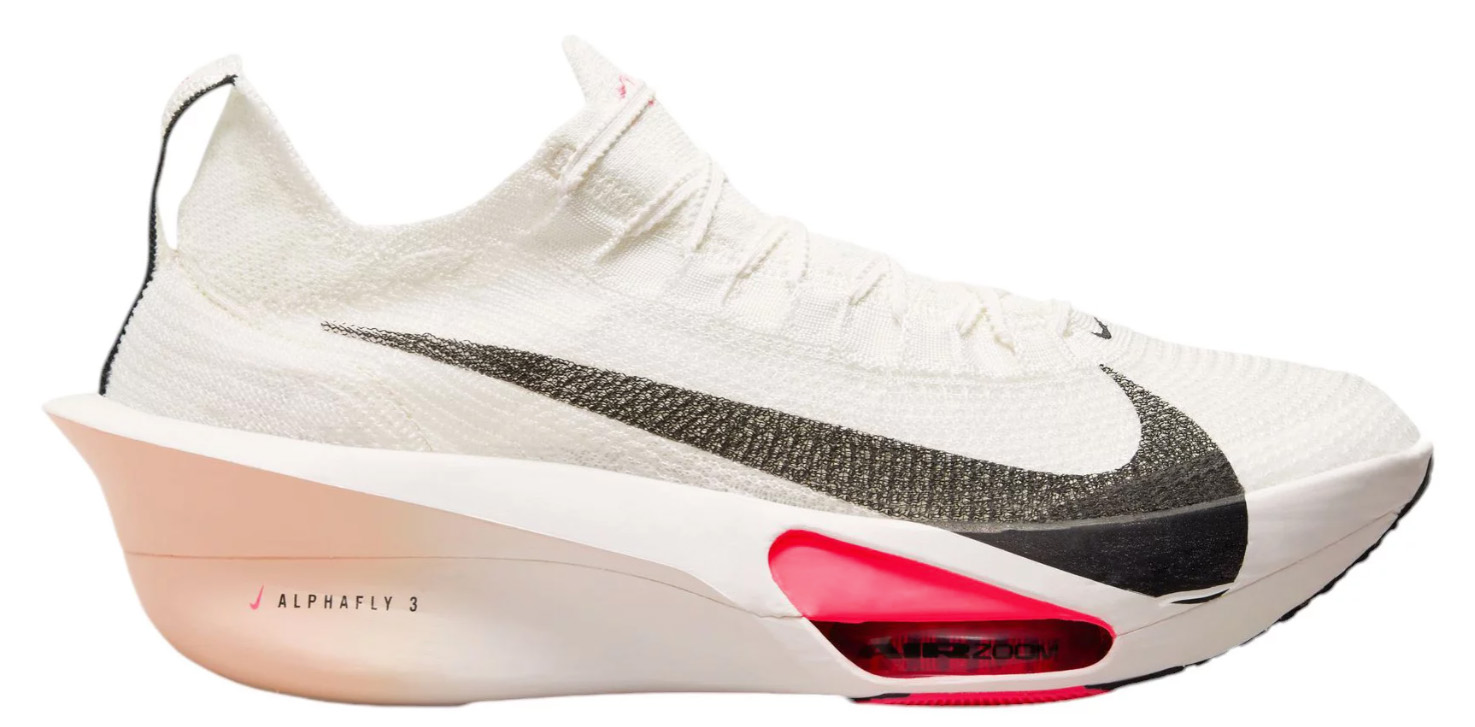 Category: Speed
Category: Speed
Weight per pair: 15.4 oz.
Cushioning: 40mm (heel)/32mm (forefoot)
What we like: Purpose-built for moving fast.
What we don’t: Expensive, narrowly specialized, and doesn't hold up well to long-term use.
Nike's specialized Alphafly 3 is well known among marathon racers, and we found it to work well as a long-distance tempo shoe (or even a shorter-distance racing shoe), as well. At under a pound for the pair, the Alphafly feels otherworldly light underfoot, and the full-length carbon fiber plate does a great job maximizing stability while keeping weight to a minimum. The ZoomX foam used in the midsole is another highlight, effectively increasing energy return better than any other shoe we tested, and the mesh upper is great at keeping air moving—critical for race-day performance when preventing overheating is a must.
But let us be clear: This specialized shoe isn't for everyone and certainly wouldn't be our first choice for daily training. First and foremost, the price is undeniably high at $285, making the Alphafly the most expensive option on our list by a wide margin. It's also highly specialized, leading to a wobbly, uncomfortable, and cumbersome feel underfoot anytime that speed wasn't our primary objective. And due to their streamlined and minimalist build, the shoes don't hold up particularly well, especially if you venture off the pavement—our pair is showing excessive wear along the outsole after just a handful of miles. In other words, the Alphafly isn't a quiver-of-one design, but if you have the restraint to reserve them exclusively for race day, the shoe is sure to impress.
See the Men's Nike Alphafly 3 See the Women's Nike Alphafly 3
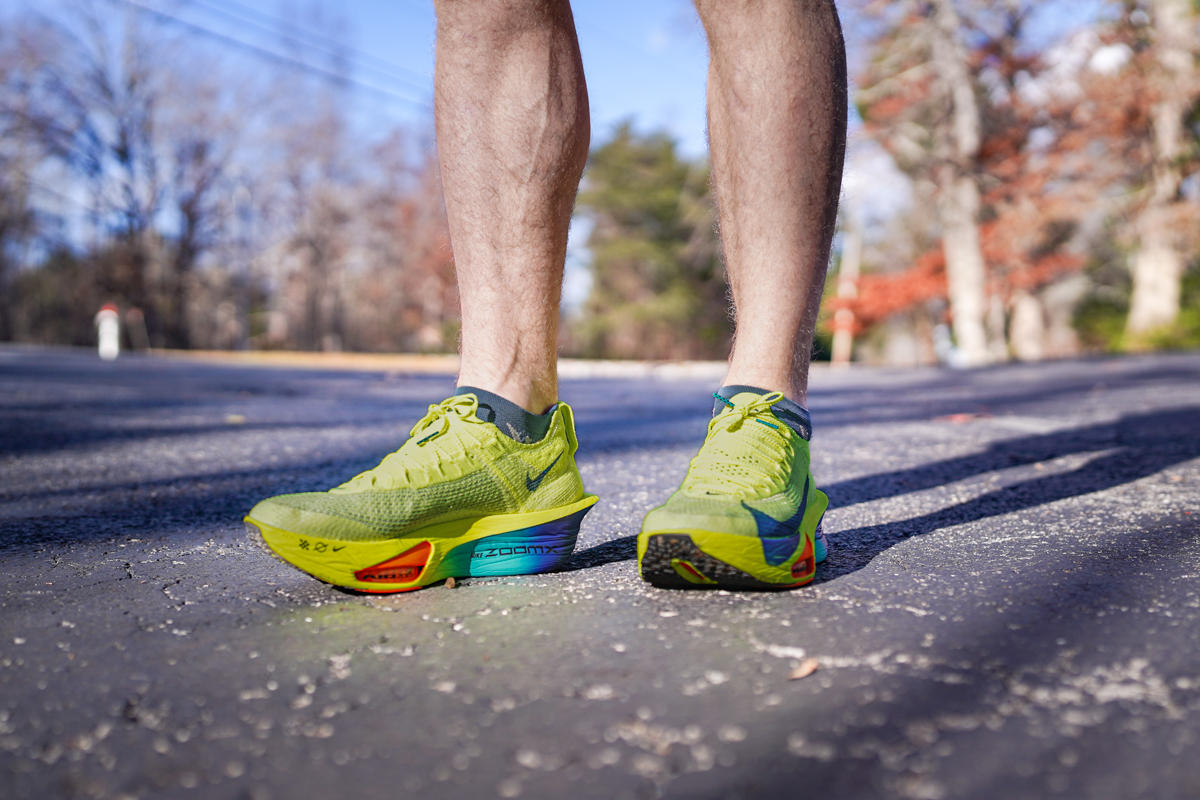
 Category: Daily training
Category: Daily training
Weight per pair: 1 lb. 3.6 oz.
Cushioning: 41mm (heel)/33mm (forefoot)
What we like: Excellent cushioning at a competitively low weight.
What we don’t: Some will find the design unstable; recent update added a couple ounces.
Few shoes have caused such a stir in the road running community as Hoka's flagship pavement crusher: the Clifton. Now in its 10th iteration, the shoe has remained a staff favorite since 2015 and thankfully adopted a more subdued, mainstream appearance since its inception (it used to be the "clown shoe" of the running world). Despite its streamlined silhouette, the Clifton's strong suits remain the same: standout long-distance comfort at a competitively low weight. The shoe performed as advertised during our tests, delivering a highly cushioned but responsive ride, cementing its place as one of the best lightweight daily trainers on the market.
With the latest update, Hoka increased the Clifton's drop from 5 to 8 millimeters and the stack height from 32 to 41 millimeters at the heel. Lack of stability has always been an issue with these shoes, and we fear the recent changes will only worsen the problem. While testing the 9, one of our editors felt the combination of tall stack height and relatively narrow platform to be too tippy for anything other than the smoothest, straightest sections of pavement. Those with weak ankles should be wary, and even runners used to neutral shoes will want to factor in a break-in period before tackling any serious mileage. Taken together, the Clifton may lack the widespread appeal of some options here, but it soaks up the miles better than most.
See the Men's Hoka Clifton 10 See the Women's Hoka Clifton 10
 Category: Speed
Category: Speed
Weight per pair: 1 lb. 0.4 oz.
Cushioning: 36mm (heel)/28mm (forefoot)
What we like: More stable than the past version; bouncy but nicely grounded.
What we don’t: A bit heavier than its predecessor; tongue tends to bunch up.
While not quite competitive enough to make our podium, Saucony's Endorphin Speed 4 stands out for its impressive balance of speed and plush cushioning. With its lightweight design and responsive PWRRUN PB cushioning (shared with their Triumph 22 above), this shoe is well suited for both tempo runs and race day. Additionally, the mesh upper offers a nice combination of breathability and a secure fit, adapting well to various foot shapes while providing ample support around the collar and tongue. During testing, the Endorphin Speed 4 felt very lively and agile, propelling us forward when moving at a quick clip without sacrificing comfort.
The shoe maintains a remarkable level of responsiveness, making it suitable for interval training and long runs alike. Additionally, the rubber outsole is both highly durable and grippy over a wide variety of surfaces, instilling confidence even in wet conditions. Very few cons arose during testing, although we did experience a bit of bunching around the flimsy-feeling tongue. The latest "4" is also a little heavier than its predecessor, although it's still competitively lightweight at just over a pound for the pair. All in all, we feel the Endorphin Speed is a great all-rounder for those looking to train and race in the same shoe—or for athletes on the hunt for an interval shoe without a carbon plate.
See the Men's Saucony Endorphin Speed 4 See the Women's Saucony Endorphin Speed 4
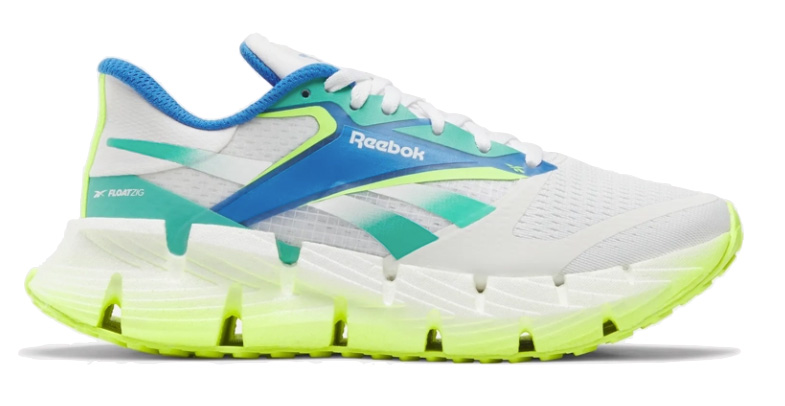 Category: Daily training
Category: Daily training
Weight per pair: 1 lb. 3.6 oz.
Cushioning: 31mm (heel)/25mm (forefoot)
What we like: A responsive, stable shoe at a great price point.
What we don’t: Midsole isn't particularly plush.
Reebok debuted their Floatride foam more than a decade ago and has continued to hone the design, resulting in a light and flexible but stable platform with efficient energy return. The FloatZig 1 shoe carries the torch with a nice balance of stiffness and cushion, providing a consistently smooth and responsive ride. The latest shoe is also slightly wider than previous models, resulting in a noticeably stable and planted feel that helps offset the taller stack height.
However, while we like Reebok's foam, the FloatZig 1 is slightly stiffer and less plush than alternatives like the Hoka Clifton 10 and Saucony Endorphin Speed 4 above—both of which also happen to be lighter. Some users also report a relatively short midsole lifespan, although we haven't noticed any packing out or flattening despite extensive mileage. And the rest of the shoe is holding up equally well, from the outsole to the nicely reinforced upper. Overall, the FloatZig is a solid all-rounder at a competitive price, and we can't help but love the bright, retro colorways.
See the Men's Reebok FloatZig 1 See the Women's Reebok FloatZig 1
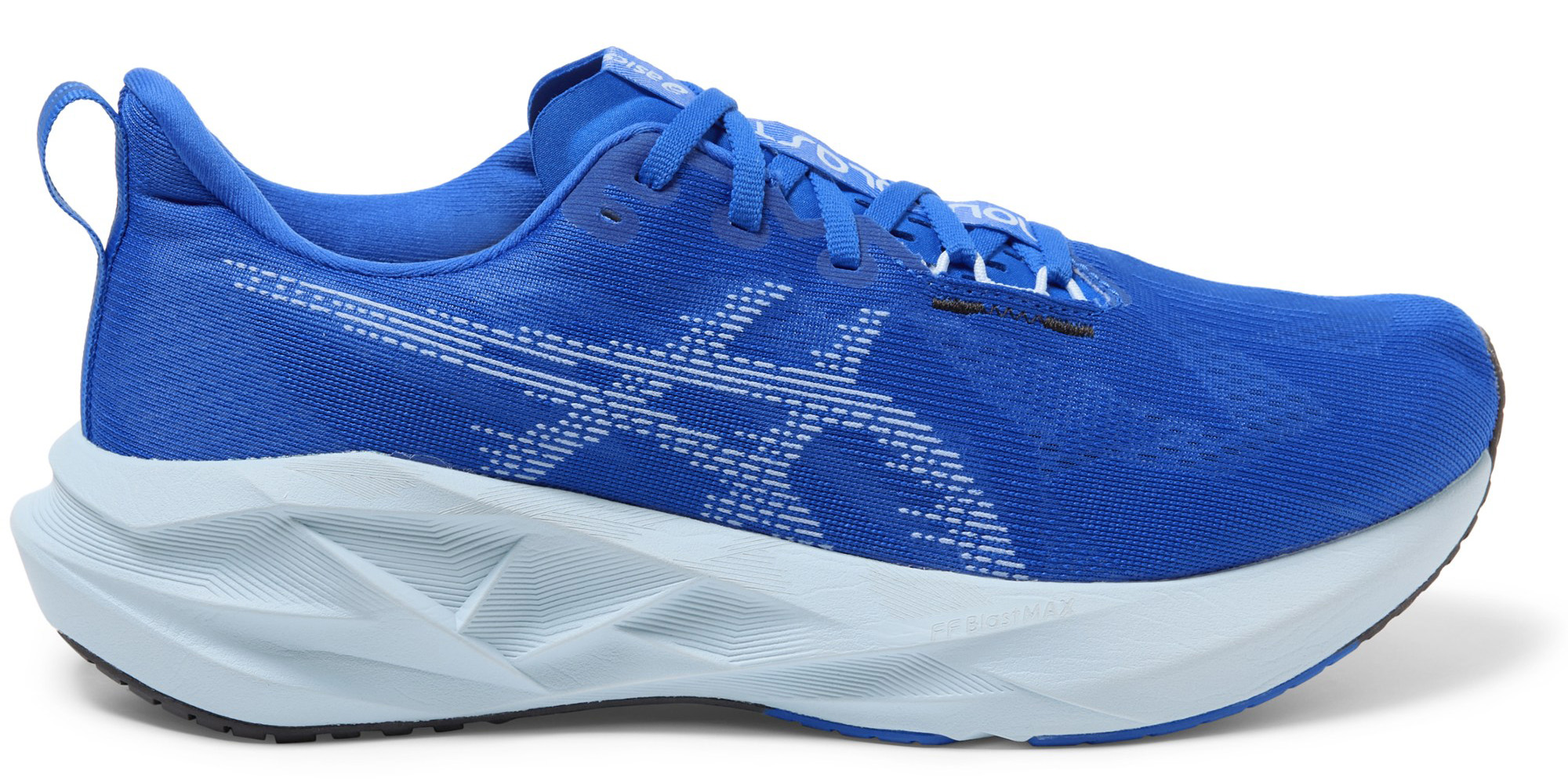 Category: Speed
Category: Speed
Weight per pair: 1 lb. 2.0 oz.
Cushioning: 41.5mm (heel)/33.5mm (forefoot)
What we like: Lightweight comfort and excellent rebound for tempo runs.
What we don’t: Unstable landing on slower-paced runs; heel stack can feel unwieldy.
At 41.5 millimeters at the heel and 33.5 millimeters at the forefoot, the Novablast 5 is among the taller shoes on our list, bested only by Hoka's latest updates. Utilizing Asics' FF Blast Max foam technology, the cushioned landings kept us fresh on everything from race-pace 5Ks to mile repeats, and Asics made good on their promise of high energy return. In fact, the Novablast has some of the best rebound among shoes we've tested, comparable to the springy Saucony Triumph above. And in line with the shoes' focus on speed, we appreciate that the upper is noticeably airy.
Despite the Novablast's excellent rebound and cushioning, we came away with enough complaints to rank it mid-pack on our list. Our biggest issue was how unnatural it felt on recovery runs: While the shoes are great for racing and tempo runs, we found stability to be noticeably lacking and had a hard time maintaining a consistent footstrike at slower speeds. The heel cushioning felt more cumbersome than springy at these paces as well, and our toes felt like they were taking the brunt of the impact on longer runs. Finally, the outsole is starting to show considerable wear after about 50 miles, which doesn't bode well for long-term durability. Taken together, the Novablast is far from the most well-rounded option here but nevertheless has its place for speed work.
See the Men's Asics Novablast 5 See the Women's Asics Novablast 5
 Category: Daily training
Category: Daily training
Weight per pair: 1 lb. 4.3 oz.
Cushioning: 30mm (heel)/30mm (forefoot)
What we like: Roomy toe box is great for comfort; zero-drop shape promotes a natural gait.
What we don’t: Not a standout in durability; a little cumbersome; not great for heel strikers.
The Torin has been a staple in Altra's lineup for years and has tackled almost every challenge we've thrown at it. Two hallmarks of the design—and Altra shoes in general—are the generous FootShape toe box and zero-drop last. While both characteristics may be polarizing for those unfamiliar, there's no denying that the Torin is one of the most comfortable running shoes available. It's certainly not the most responsive offering, but the flip side is a very natural feel. Rounding out the design is a soft and breathable upper that does a great job keeping air moving.
While not excessively heavy at 1 pound 4.3 ounces (the outgoing 7 was 1 lb. 3.6 oz.), the Torin 8 is slightly heavier than most competitors with a clunkier silhouette to boot, and it's not particularly fast as a result. We also experienced durability issues with the prior version, including premature outsole deterioration, and we expect the similarly built 8 will suffer similar problems. Finally, heel strikers should steer clear of zero-drop designs in general. But for wider-footed runners who care more about long-distance comfort than speed, the Torin has been well liked for generations.
See the Men's Altra Torin 8 See the Women's Altra Torin 8
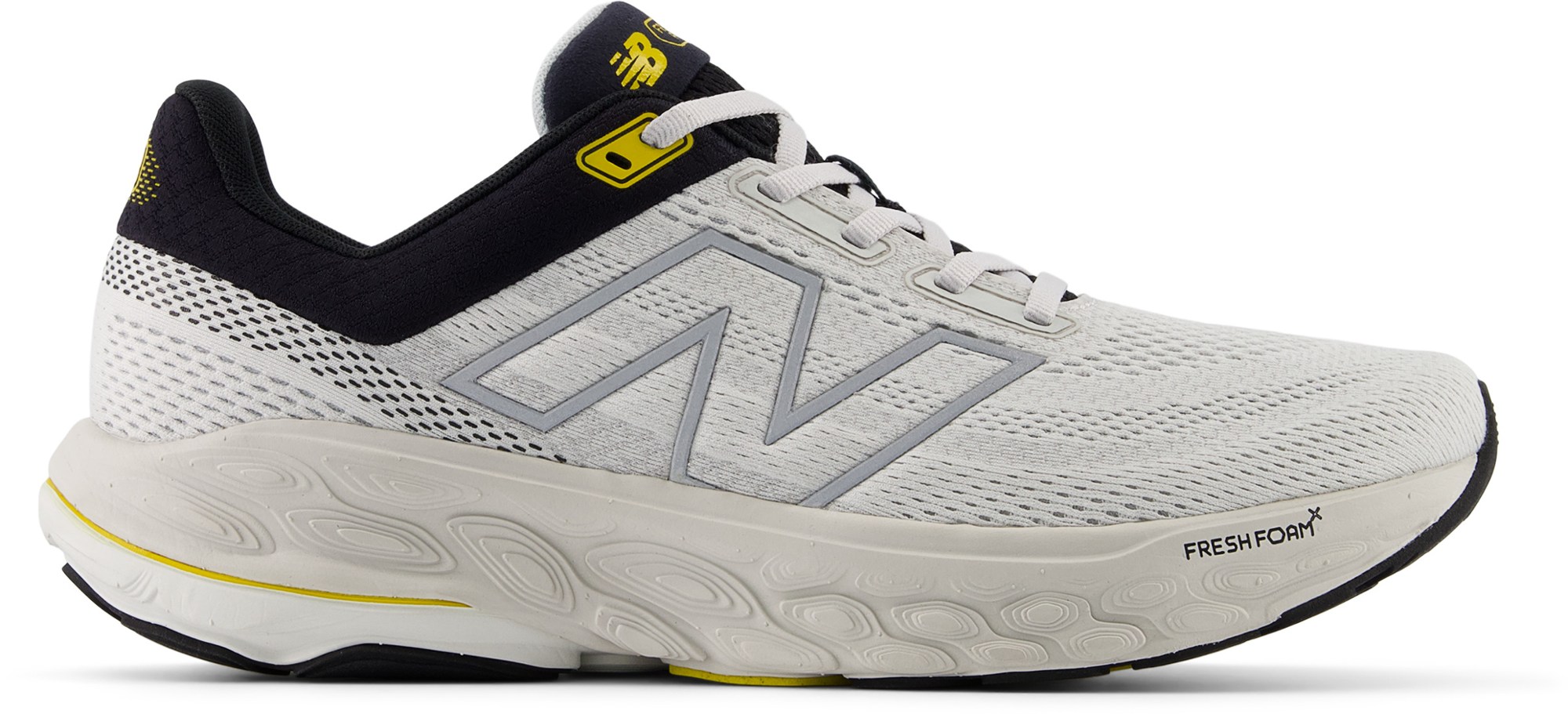 Category: Daily training
Category: Daily training
Weight per pair: 1 lb. 5.6 oz.
Cushioning: 29mm (heel)/21mm (forefoot)
What we like: A supportive and well-rounded stability design for those prone to overpronating.
What we don’t: Doesn't excel in any one category.
The Fresh Foam X 860v14 is the latest model in a long line of New Balance stability shoes, which aim to improve the motion control of a runner's stride by way of added support and structure. Featuring a stability plane inserted into the midsole, the design effectively minimizes overpronation to prevent added stress on the feet and legs. The padded and gusseted tongue, well-cushioned ankle, airy mesh upper, and namesake Fresh Foam X midsole all work in concert to maximize support and long-distance comfort. And importantly, the cushioning feels quite even throughout the entire shoe—unlike the Asics Novablast 5 above, which is noticeably lacking in padding under the toes.
We found that the Fresh Foam X 860v14 does a lot of things well but doesn't stand out in any one area. The shoes showed very little wear after our testing period but lack the sleek, modernized look of many competitors. We also found the cushioning to be a bit firmer than we'd prefer for easy runs on pavement, and the lack of energy return is notable (although the midsole does a good job absorbing impacts). After testing the New Balance alongside the Saucony Endorphin Speed 4 and Brooks Adrenaline GTS 24 above, the slightly dull feeling stood out. But for runners prone to overpronating, the New Balance is another quality stability design to have on your radar.
See the Men's Fresh Foam X 860v14 See the Women's Fresh Foam X 860v14
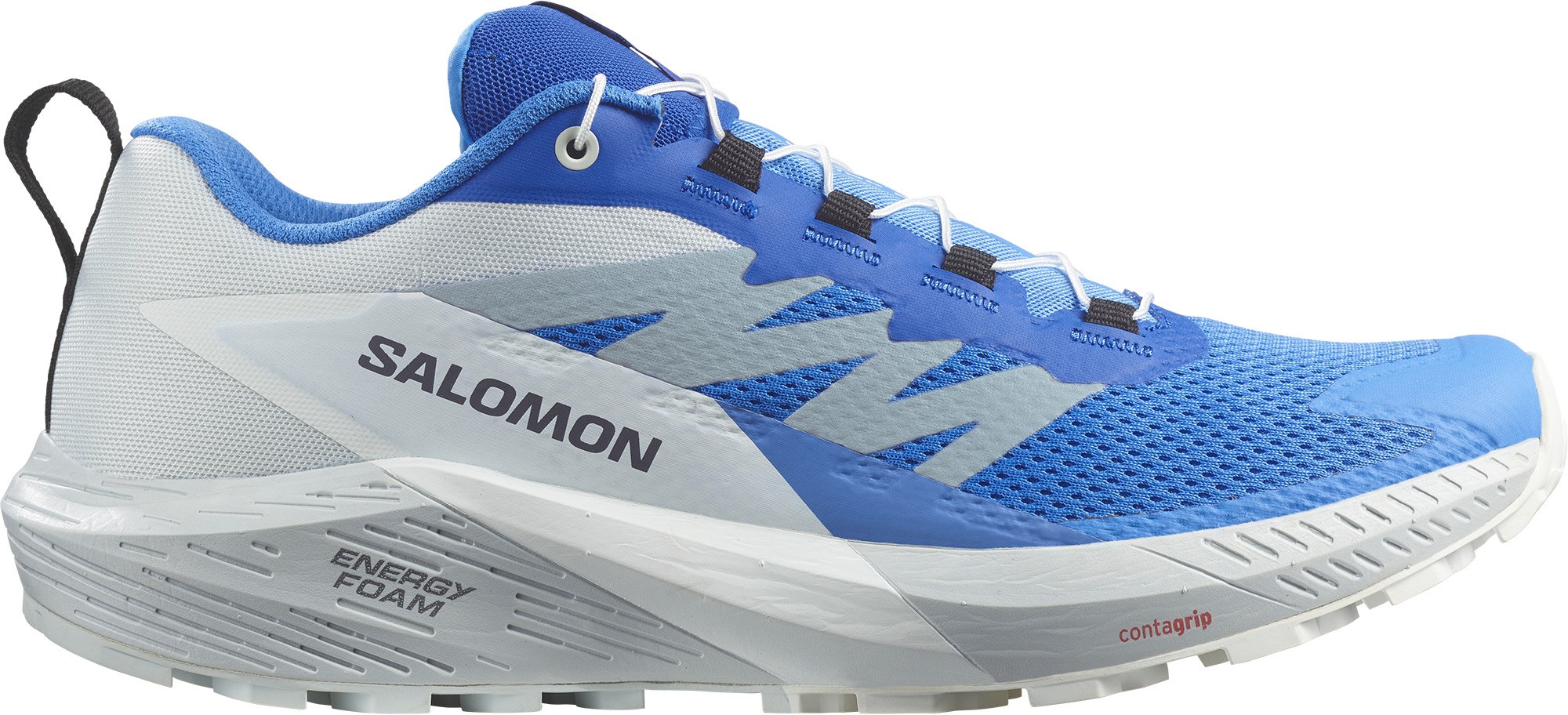 Category: Trail
Category: Trail
Weight per pair: 1 lb. 4.7 oz.
Cushioning: 29.6mm (heel)/21.3mm (forefoot)
What we like: Highly versatile and great out-of-the-box comfort.
What we don’t: Fit is hard to dial in due to the single-pull lacing system; relatively low stack height makes it easy to feel rocks underfoot.
For a trail runner that can do it all, we love the Salomon Sense Ride 5. Although not quite as snazzy-looking as some of the newer trail shoes, it’s not to be underestimated: The Sense Ride 5 is equally at home on quick door-to-trail runs as it is during ultra-distance pursuits and can even handle technical cross-country terrain with ease. The all-around performance isn’t surprising given the Salomon’s versatile design, which features a moderate amount of cushioning (29.6mm in the heel and 21.3mm at the forefoot), generously sized toe box, fairly standard 8-millimeter drop, and full Contagrip rubber outsole. And it’s comfortable, too: During a 100-mile race a couple summers ago, we swapped to the Sense Ride 5 at mile 45 (after forming blisters in one of the aforementioned snazzy shoes) and wore it to the finish line without complaint.
But while the Sense Ride 5 is good at everything, it’s not necessarily a top performer in any specific category. Held up against true trail specialists like Salomon's own Speedcross, you give up a bit of protection, grip, and ground feel for challenging terrain, and the Sense Ride is not as soft or lightweight as a max-cushioned trail runners like the Hoka Speedgoat. In testing, we also came away with complaints regarding the Quicklace system, which makes it hard to fine-tune fit, and relatively low stack height, which is great for responsiveness but means it’s easy to feel rocks and other trail debris, especially at the forefoot. But for a versatile trainer that can handle most trails, the Sense Ride 5 is one of the most well-rounded designs we’ve tried. Editor's note: The Sense Ride line is sunsetting this season. The 5 is still available on sale in most sizes, so grab it while you can.
Read more: women's Salomon Sense Ride 5 review
See the Men's Salomon Sense Ride 5 See the Women's Salomon Sense Ride 5
 Category: Daily training
Category: Daily training
Weight per pair: 1 lb. 2.4 oz.
Cushioning: 32mm (heel)/23mm (forefoot)
What we like: Lightweight with ample cushioning; redesigned midsole and outsole promise improved stability.
What we don’t: Recent update added a little weight; not particularly secure underfoot.
Last but not least, we have the On Cloudsurfer 2, a unique design with a significantly rockered build that's sure to stand out. This shoe grew on us in testing, especially when running in a straight line on flat terrain: The innovative CloudTec midsole is built to collapse sequentially through each part of the stride, providing a noticeably smooth takeoff and weight transfer. What's more, the upper is sleek and breathable with minimal overlays, and the shoes are competitively light at just over a pound for the pair. We've seen On shoes explode in popularity in recent years, and the Cloudsurfer makes it clear that the brand can hold its own in the highly competitive space.
The Cloudsurfer 2 still ranks last on our list, but On's recent updates should fix some of the issues we encountered last season. First, they revamped the cut-out midsole design to be less dramatic and refined the cushioning with a minor increase in padding under the toes (from 22mm to 23mm). The 2 also features a tightened tread design for more stability underfoot, which should help with the edges' propensity to collapse on impact. We still feel the shoe is best for easy runs on smooth surfaces, but we're hopeful about the recent changes and may adjust the Cloudsurfer 2's ranking once we've put more miles on the shoes.
See the Men's On Cloudsurfer 2 See the Women's On Cloudsurfer 2
| Shoe | Price | Category | Weight | Cushioning | Drop | Support |
|---|---|---|---|---|---|---|
| Brooks Ghost 17 | $150 | Daily training | 1 lb. 4.2 oz. | 37/27mm | 10mm | Moderate |
| Brooks Launch 11 | $120 | Daily training | 15.4 oz. | 35.5/27.5mm | 8mm | Moderate |
| Saucony Triumph 22 | $160 | Daily training | 1 lb. 4.2 oz. | 37/27mm | 10mm | Moderate |
| Brooks Adrenaline GTS 24 | $140 | Daily training | 1 lb. 4.0 oz. | 35.5/23.5mm | 12mm | High |
| Saucony Peregrine 15 | $145 | Trail | 1 lb. 3.4 oz. | 28/24mm | 4mm | Moderate |
| Hoka Bondi 9 | $175 | Daily training | 1 lb. 5.0 oz. | 42/37mm | 5mm | Moderate |
| Nike Alphafly 3 | $285 | Speed | 15.4 oz. | 40/32mm | 8mm | Low |
| Hoka Clifton 10 | $150 | Daily training | 1 lb. 3.6 oz | 41/33mm | 8mm | Moderate |
| Saucony Endorphin Speed 4 | $170 | Speed | 1 lb. 0.4 oz. | 36/28mm | 8mm | Moderate |
| Reebok FloatZig1 | $120 | Daily training | 1 lb. 3.6 oz. | 31/25mm | 6mm | Moderate |
| Asics Novablast 5 | $140 | Speed | 1 lb. 2.0 oz. | 41.5/33.5mm | 8mm | Low |
| Altra Torin 8 | $150 | Daily training | 1 lb. 4.3 oz. | 30/30mm | 0mm | Moderate |
| New Balance Fresh Foam X 860v14 | $140 | Daily training | 1 lb. 5.6 oz. | 29/21mm | 8mm | High |
| Salomon Sense Ride 5 | $140 | Trail | 1 lb. 4.7 oz. | 29.6/21.3mm | 8.3mm | Moderate |
| On Cloudsurfer 2 | $160 | Daily training | 1 lb. 2.4 oz. | 32/23mm | 9mm | Low |
Our list of running shoes was significantly revamped for 2025, representing a major overhaul since our last update in December 2020. To get back up to speed, our team hit the pavement with several road running shoes, sprinkling in some hybrids and trail-focused models for good measure. Longtime contributor Sasha Brown put countless shoes to the test over 200 miles in North Vancouver, focusing primarily on longer-distance runs on both the hilly streets and paths near her home as well as over flatter, coastal terrain. Lifelong runner Ben Stalheim also contributed extensively, putting several shoes through their paces on everything from speedy 5K road races to longer recovery efforts and tempo workouts. Finally, editors Maggie Slepian and Chris Carter are avid runners with a combined 20 years of gear testing experience under their belts. Chris is a diehard trail trotter who occasionally hits pavement for road races and training runs, while Maggie is a 4-season runner who gets out several times a week on everything from pavement to gravel and high-elevation trail systems near her home in Bozeman, Montana.
Our current lineup of 15 running shoes reflects our firsthand experiences from ongoing testing, evaluating everything from initial fit and feel to durability over the course of nearly 600 combined testing miles on varied terrain. When we test running shoes, we closely analyze performance characteristics, from energy return through the midsole to stability in each phase of the stride. We also pay attention to key factors like comfort, responsiveness, heel-to-toe drop, impact absorption, and the quality of materials used, prioritizing designs that excel in multiple categories. As we continue to test running shoes, we’ll amend the list above to reflect our favorites. Finally, keep in mind that these shoes are primarily intended for road running and moderate gravel and dirt. For more technical trails, check out our article on the best trail running shoes.
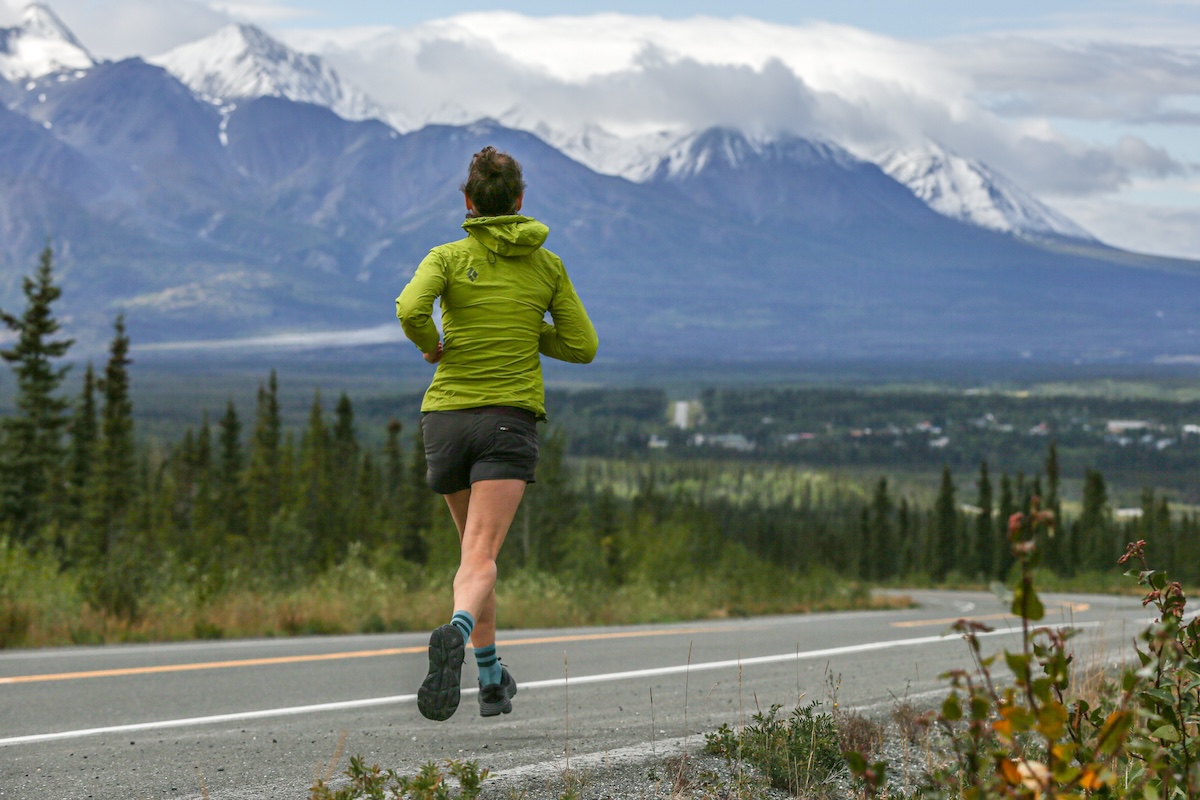
For an activity as simple as putting one foot in front of the other, the number of subdisciplines within the sport of running is surprising. Are you a serious runner who pushes PRs, logs tempo workouts, and competes in races? An every-so-often runner who likes to hit the pavement for a few leisurely miles at a time? Or perhaps you’re a distance jogger who competes in the odd marathon. Regardless of your style, you’ll want to choose the right running shoe for the job. To help, we break down running shoes into three main categories: daily training, racing, and trail.
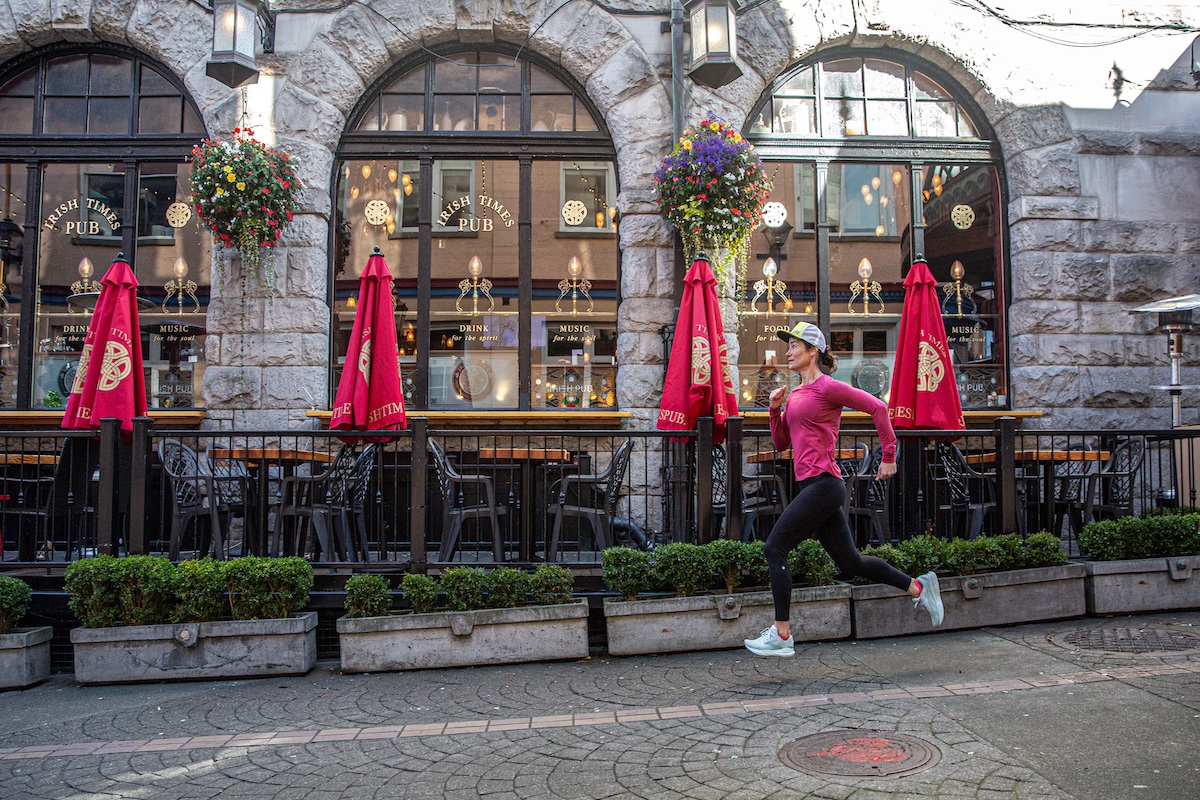
Before we dive deeper, we should note that choosing the right running shoe can be a very subjective process. For example, a runner who tends to overpronate might choose a stability shoe like the Brooks Adrenaline GTS 24 as their daily trainer, while someone prone to nagging pains and discomfort might opt for the max-cushioned Hoka Bondi 9. For this reason, many of our top picks are good for daily training, recovery, and race pace. In other words, our delineations are meant to be a helpful guideline, but don’t limit yourself too much. There’s simply no substitute for trying a shoe on in person and taking the time to understand your preferences (be patient, this might take a few hundred miles). And once you land on a shoe (or shoes) that works for you, it’s likely you’ll stick with that same model or subsequent iterations for many seasons.
Daily Training
Daily training shoes are the ideal choice for those looking for a day-in, day-out trainer or a cushioned ride for recovery runs. These shoes aren’t designed to break Strava course records or distance PRs, but they’re comfortable, well priced, and provide a great combination of responsiveness and support for most runners. Perhaps most importantly, shoes in our daily training category are durable, featuring resilient midsoles that bounce back after a beating, generous outsole rubber, and builds that can handle 400+ miles of wear and tear. We’ve also snuck a few budget models into this category, which will sacrifice a bit of comfort and/or durability for a lower price tag. The Saucony Triumph 22 and Brooks Ghost 17 are two of our favorite daily training shoes and will get the job done for the majority of recreational runners.
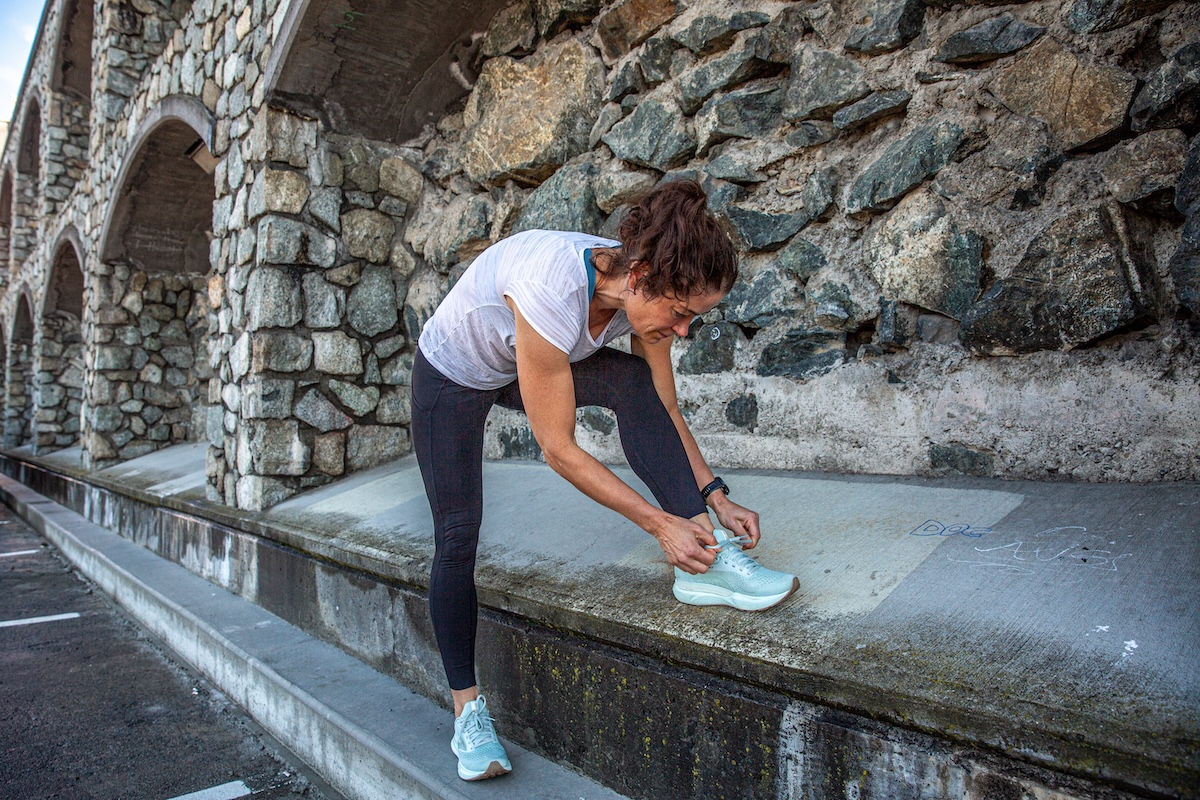
Speed
Shoes in our speed category are purpose-built for those who want to travel fast, whether in training, during a race, or while attempting a PR. Most of these shoes feature new technologies like a nitrogen-infused midsole or carbon/TPU plate, both of which help to propel your foot forward with each step. Look also for streamlined uppers, midsoles, and outsoles, with an emphasis on shaving weight for unburdened movement. As a result, speed shoes aren’t the most durable options, lack some comfort (especially for wide or swollen feet), and are generally stiffer and less cushioned than most. They’re also expensive, often costing around $170 or more (carbon-plated designs like the Nike Alphafly are even pricier). The Saucony Endorphin Speed 4 is one of our favorite speed shoes of the year, providing impressive power from its nylon plate yet still offering cushion and support for long-distance comfort.

Trail
Our trail running shoe round-up covers our top picks for those who don't frequently hit pavement, but we'd be remiss not to mention some of our favorites that cross over well for use on mixed surfaces. This year, the versatile Saucony Peregrine 15 and (soon to be discontinued) Salomon Sense Ride 5 made the cut, offering deeper traction and more rugged upper materials for trail miles. Both of these models will perform on the road in a pinch, though running over pavement will quickly wear down their tread. Trail running shoes are generally more durable than road runners, have much more aggressive outsoles, and can fall on the heavier end of the spectrum. If you are just getting into running and aren't sure what discipline you are cut out for (road or trail running), purchasing a crossover shoe could be a good idea. These shoes allow you to find your stride in a variety of different conditions without having to buy multiple pairs of shoes from different categories. They are also great for road-to-trail objectives, where you might start from your house and run to a trail close by. While not featured on our list, another one of our favorite models for this type of use is the versatile Hoka Challenger 7.
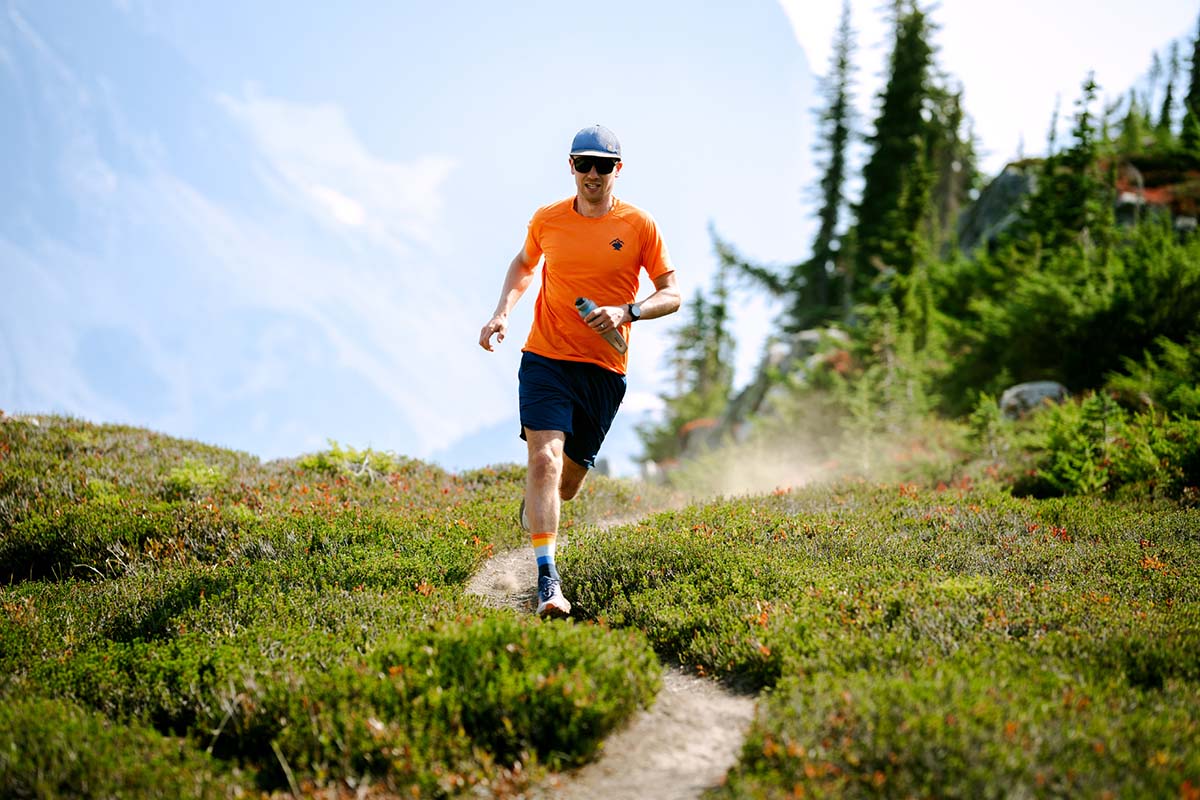
To determine underfoot cushioning, look for stack height: the measured height from where the foot sits inside the shoe to the ground at both the heel and forefoot. At the low end is a model like the New Balance Fresh Foam X 860v14 (29mm at the heel and 21mm at the forefoot), while the Asics Novablast 5 (41.5mm/33.5mm) is at the other extreme. Most modern running shoes land somewhere around 28 to 32 millimeters at the heel, although max-cushioned designs are becoming increasingly common.
How do you determine the ideal amount of cushioning? There isn’t a perfect answer, although personal preference, running style, and preferred distance can point you in the right direction. Thin shoes typically are lighter, faster, and excel at short distances, although they can lead to foot soreness as the miles add up. Going the plush route aids in shock absorption and comfort for longer races or recovery days. Historically, you would lose some energy return with excess foam, but updates in foam technology and shoes with a carbon plates have helped offset that trade-off significantly. In the end, most runners will be happiest somewhere in the middle. Popular designs like the Hoka Clifton 10 (41mm/33mm) and Saucony Triumph 22 (37mm/27mm) are well cushioned, versatile options with plenty of protection and comfort for daily training without compromising a peppy ride during races from 5Ks to marathons.
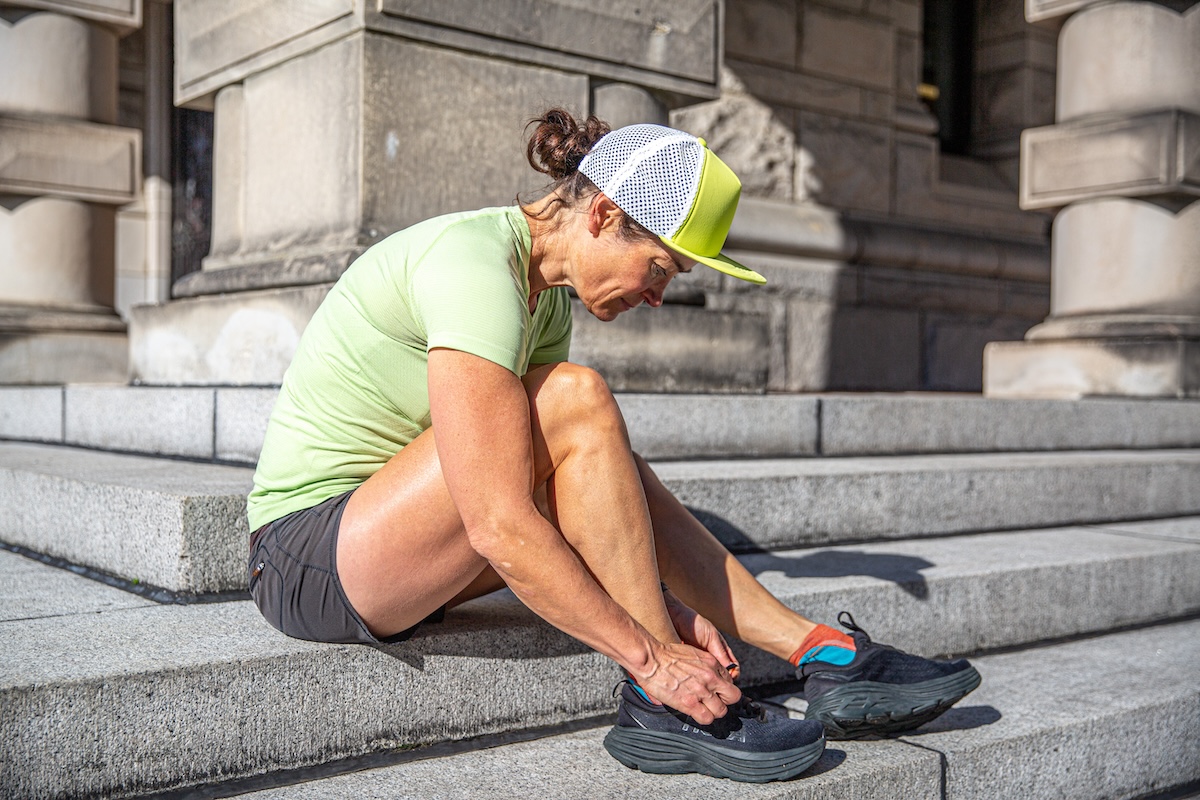
Heel-to-toe drop describes the difference in shoe height from the heel to the toe. In theory, it’s not the flashiest of specs, but the dramatic growth of low- and zero-drop shoes (designs that are close to or equally tall at the heel and toe) over the past decade have put it squarely on runners’ radars. Looking at our picks above, the spread ranges from 12 millimeters for a traditional design like the Brooks Adrenaline to low-drop options like the Hoka Bondi 9 (5mm) and zero-drop Altra Torin.
Our take on heel-to-toe drop is that if you’ve been comfortable with your traditional 8-millimeter-drop shoes for years, there’s little reason to experiment with a pair of zero-drop shoes like Torin. Injury prevention was one of the early calling cards of zero-drop, barefoot models like Five Fingers, with the claim being that they encouraged a “natural” stride that resulted in a midfoot strike. But numerous studies, including this one published in the American Journal of Sports Medicine, have failed to support it. That said, we know of plenty of runners who have found the switch to a zero-drop style a revelation in running comfort. Those folks commonly already have a midfoot or forefoot strike, so if that sounds like you, it might be worth making the switch. And if you do plan to run in a low-or zero-drop shoe, we recommend slowly transitioning with lower mileage and frequency to start. The aforementioned study showed that dedicated runners that went from a traditional to low-drop shoe had a higher chance of injury, which can be mitigated by easing into the shift.

In order to find the best pair of shoes for you, it can be helpful to understand your running gait, which is largely determined by your style of pronation. Pronation describes the way in which your foot strikes the ground with each step and is easy to discern by examining the wear patterns on a used pair of shoes or popping into your local running shoe store for a test. In general, there are three main styles of pronation: neutral pronation, overpronation, and supination.
Neutral Pronation
To start, neutral pronation means you go through the following cycle: Your feet hit the ground and roll slightly inwards while the arch flattens (for visual learners, this chart from Asics is helpful). This is considered a natural running and walking style, as the inward rotation helps with shock absorption while keeping your body comfortably aligned. One helpful indicator that you have this type of gait is wear patterns on old shoes that are even across the forefoot and lightly worn on the outside heel. Most running shoes are made for neutral pronators (including the majority of shoes on our list—see the “support” column in our comparison table above), which means they provide no extra support on the inside of the foot.
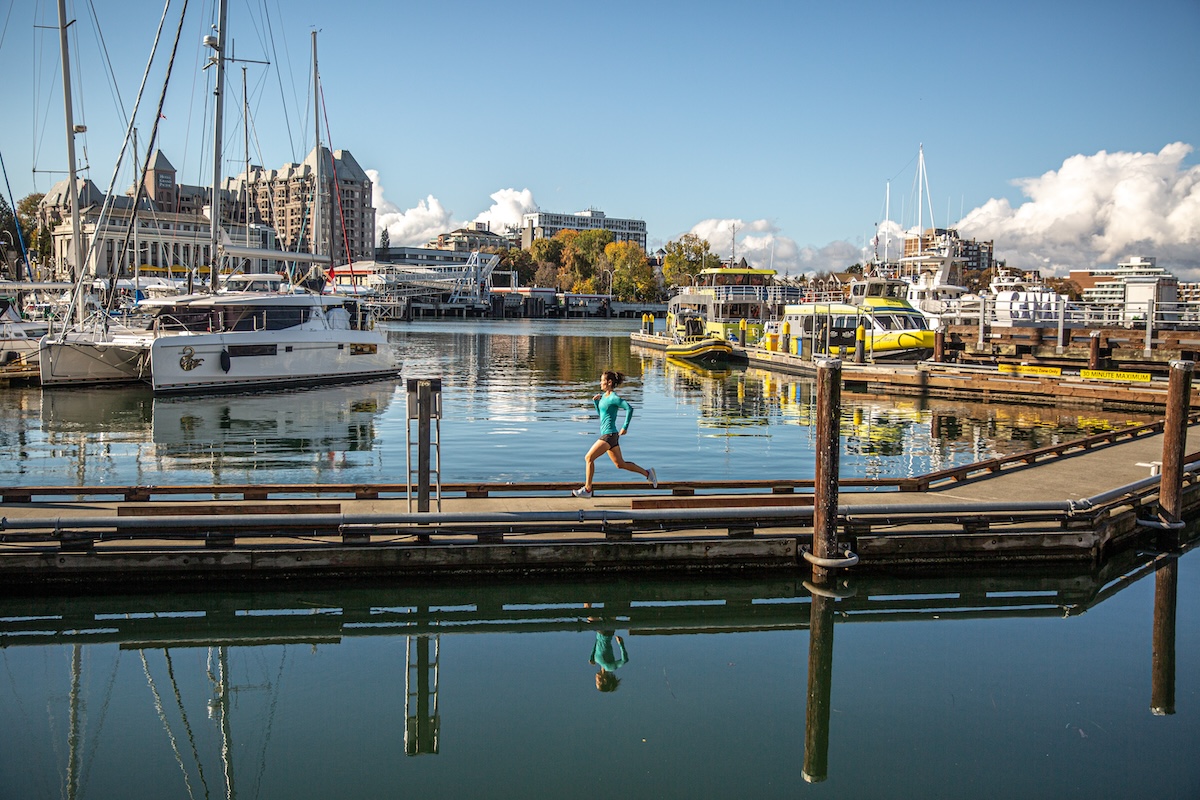
Overpronation
Next up is overpronation, which is when the ankle rotates heavily inwards. Runners with this type of gait often (but not always) have flat feet and will see wear patterns along the insides of their shoes at both the heel and forefoot. Historically, overpronators were advised to purchase a stability/motion control shoe or invest in an aftermarket insole. The rationale behind this is that the extra support and structure encourages your feet to mimic neutral pronation, thereby reducing the risk of injury. However, if you’re looking for conclusive, evidence-based research that this happens, you’ll come up empty. It’s true that many overpronating runners like the feel of a stability shoe, especially those that are fairly unobtrusive like the Brooks Adrenaline GTS 24 and New Balance Fresh Foam X 860v14. But it’s equally important to understand there isn’t a universal “perfect” gait, and overcorrecting with too much support also can be a potential recipe for injury.

Supination (Underpronation)
Finally, supination or underpronation is when the ankle rotates outwards while running. This is the least common gait style, but characteristics include feet with high arches and old shoes showing wear along the outer edges of the soles at the front and back. Similar to overpronation, it’s not a perfect science in finding an ideal shoe. That said, most runners with supination prefer a neutral style with a lot of flexibility. Shoes that fit the bill include the top-ranked Brooks Ghost 17.
As we mentioned above, the height of your arches is closely tied to pronation: In general, those with "normal" arches fall into the “neutral” pronation category, runners with flat feet or low arches have a tendency to overpronate, and high arches are associated with supination. However. whether or not you should base any portion of your buying decision on this information is up for debate. On one hand, Asics provides specific recommendations for those with flat/low, average, and high arches (with the caveat that “actual biomechanical needs vary from person to person”). On the other, the jury is still out on whether or not choosing shoes based on arch support reduces the risk of injury. Without solid evidence behind the benefits, it’s best to think of it as a personal, comfort-based decision. Further, runners who have consistent challenges finding a suitable pair of shoes will be best off meeting with a podiatrist for recommendations on foot strengthening, shoe types, or orthotic inserts.

When purchasing a running shoe—especially in store—you’ll likely be faced with the question of if you need a neutral or stability shoe. In general, runners with a neutral gate (neutral pronation) or those who underpronate will want a neutral shoe (this is the core of the market), and those who overpronate will want a stability shoe. Motion control shoes provide the most support and are reserved for those with very flat feet or big overpronation issues. If this sounds like, you, strength training and/or hiring a running coach to work on gait may also be beneficial.

Neutral shoes are characterized by their flexible construction, some level of cushioning underfoot, and light weight. This wide-ranging category encompasses everything from ultralight race designs to heavier and cushier daily trainers, including a number of our top picks. Stability shoes, on the other hand, offer a step up in support compared with neutral options. These designs include some lateral stability—often in the form of a denser foam “post” along the inside of the shoe—to lightly correct a runner’s gait. Stability shoes are common choices for those who find neutral shoes tippy and uncomfortable, and a few of our top picks include the Brooks Adrenaline GTS 24 and New Balance Fresh Foam X 860v14. Finally, motion control shoes have extra stability integrated into the upper and midsole and stiffened-up heels, which makes them among the heaviest and slowest on the market. None of these made the list.

Weight is among the most publicized specs for running shoes, and for good reason: A lighter shoe requires less effort, which adds up quickly over long distances. As such, it’s not surprising that the lightest shoes are designed for moving fast. Race-focused models like Nike Alphafly 3 tip the scales at just 15.4 ounces per pair, but the core of the market comes in a few ounces heavier and emphasize longevity and comfort. Finally, the heaviest models include stability shoes like New Balance's 1-pound-5.6-ounce Fresh Foam X 860v14.
It's a good idea to have weight in mind when choosing your shoes, but it’s equally important not to look at that number in complete isolation. Choosing the lightest model would put you in a pair of race flats, which compromise overall comfort, durability, and traction in the name of speed. In the end, it’s best to use weight as one of many factors in determining your ideal pair of runners.

Upper
A shoe’s upper refers to the material(s) that wraps around the sides and top of your feet. Typically made out of a mesh or knit fabric, the goal is to balance flexibility with support and running comfort. We’ve found that quality uppers are fairly thin and have minimal overlays and seams to encourage breathability and trim weight. In addition, they’re made with soft materials that hold your feet without feeling restrictive or abrasive. For a daily training shoe, you’ll want to look for a more durable (read: thicker) upper, while speed-oriented shoes typically utilize more stripped-down designs.
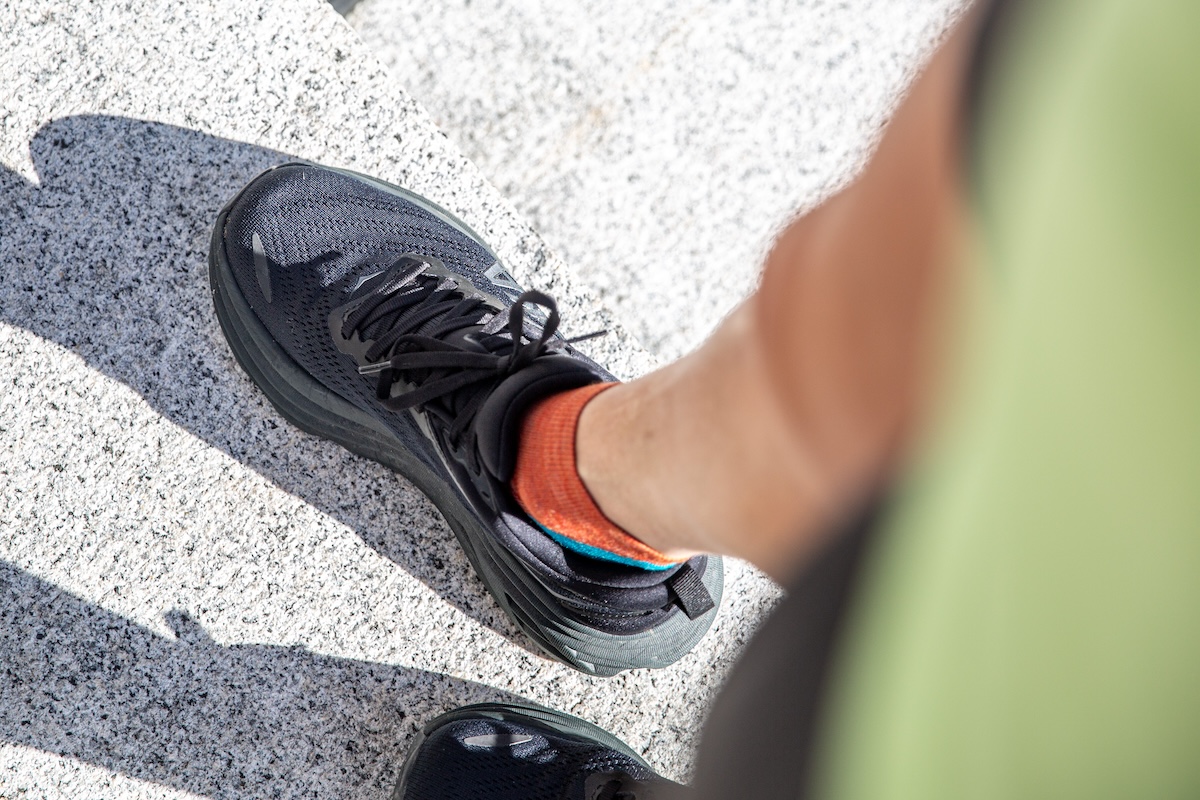
Midsole
As the name indicates, a midsole is sandwiched between the removable insole and outsole at the bottom. Largely comprised of foam, the midsole plays a significant role in a shoe’s shock absorption, energy return, and all-around comfort. As such, it’s one of the flashiest and techiest parts of the shoe, featuring proprietary foams with names like “React,” “Fresh,” and “Boost.” Designs vary widely based on thickness, cushioning, and intended use—race / speed-oriented shoes are firmer, while trainers and long-distance shoes are often softer. Midsoles on daily runners prioritize durability, with resilient foam that bounces back fast and resists packing out. It’s a good idea to read up on a shoe’s midsole style to make sure it’s a good match for your running needs.
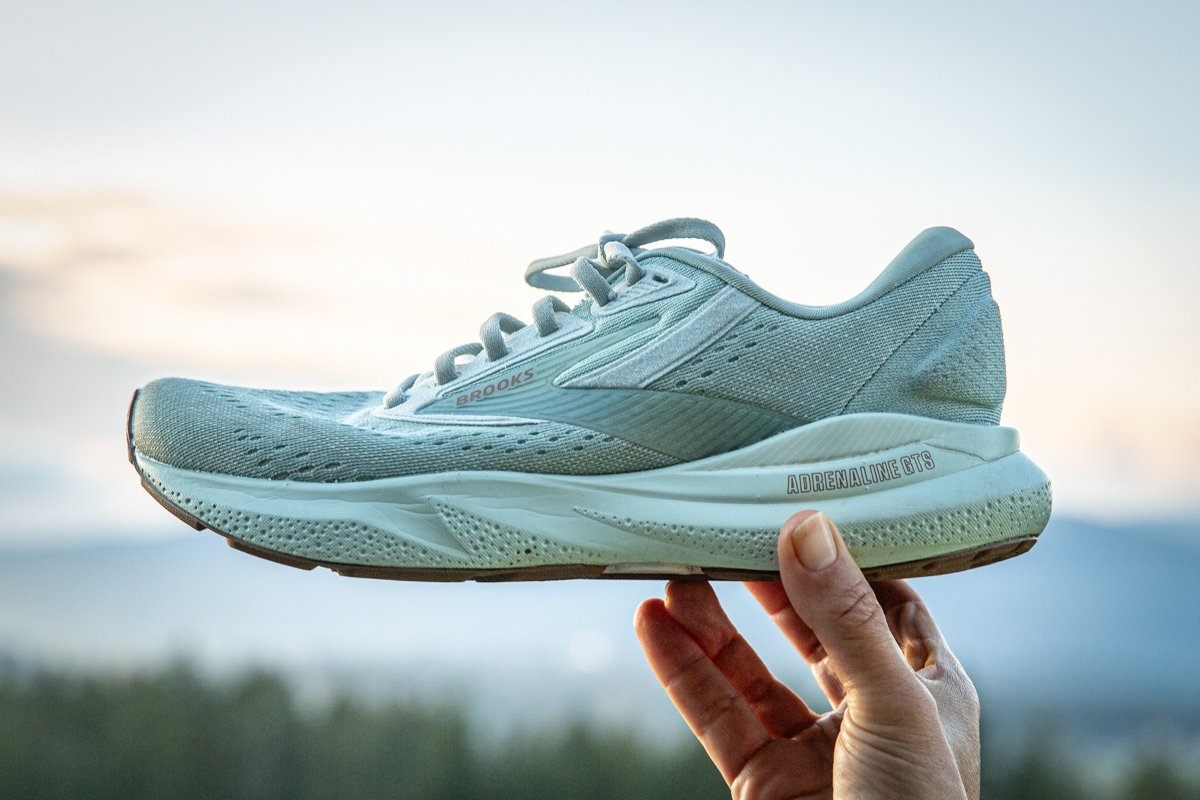
Outsole
The final piece is the sole or outsole of the shoe. Designs fall into two general categories: blown or carbon rubber. Starting with blown rubber, this is the lighter alternative that uses an air injection process to cut weight and retain a lot of flexibility and bounciness underfoot. Downsides are that the material isn’t very durable and doesn’t provide a lot of traction, especially in the wet. Because of this, blown rubber is commonly used around the forefoot and midfoot and rarely takes up the entirety of the exposed outsole. Carbon rubber is heavier and more rigid, but strategically placed panels of it boost longevity and grip in a variety of conditions.
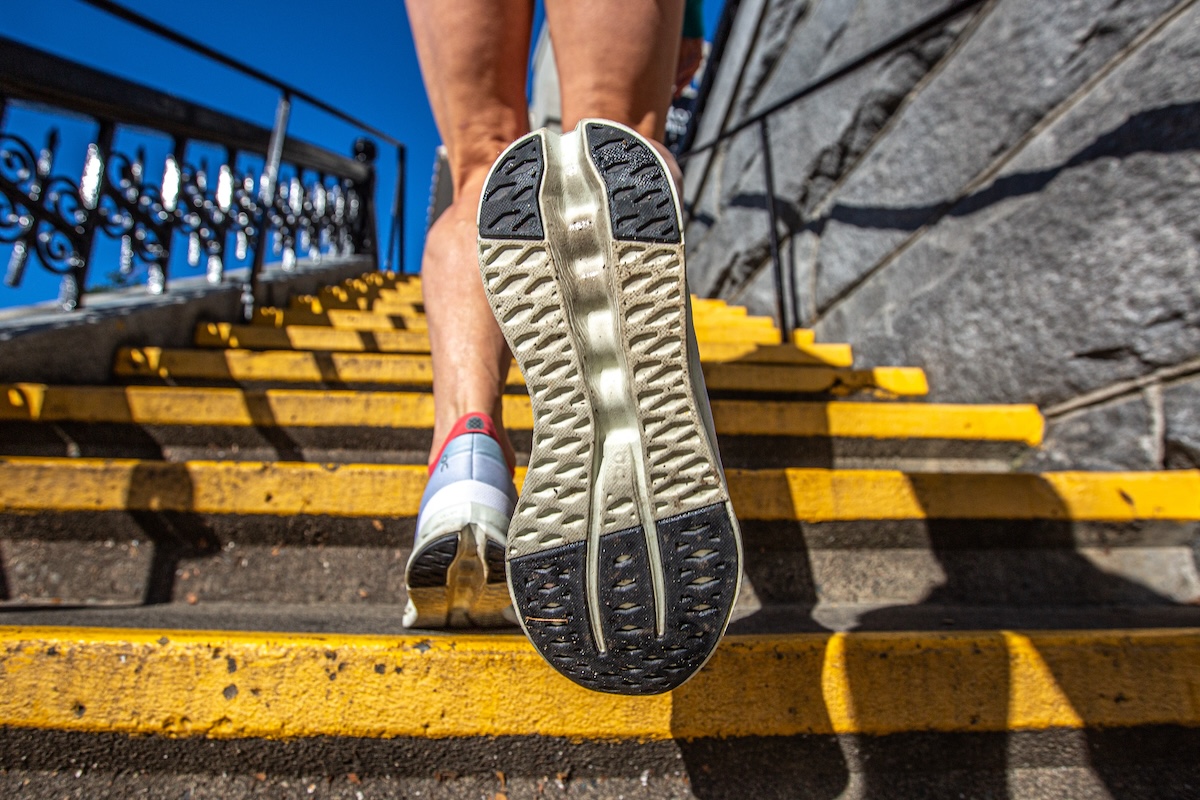
The amount of traction a given shoe provides is one of the top considerations for trail runners, but it falls lower down the priority list for road use. That’s not to say that traction can’t come into play in certain situations on pavement. Some lightweight road shoes have overly simplified outsoles with too much blown rubber and exposed midsole foam, making them sketchy when running on wet surfaces or even when crossing painted lines on roads and crosswalks. On the other hand, Hoka's Challenger 7 (not included above) balances road and dirt needs with a combination of 4-millimeter lugs under the heel and forefoot and a max-cushioned midsole that's designed to absorb the impact of running on pavement.
Nailing down fit and sizing is one of the more challenging parts of online shoe shopping, but there are some brand-specific generalizations that make it easier. Altra and Topo Athletic shoes consistently have a wide toe box and fairly generous midfoot, while Nikes are known to run pretty narrow, which can be an issue for those with high-volume feet. Hoka, Brooks, Saucony, and Asics often fall somewhere in the middle. Of course, there are variations within a brand based on the model—performance-oriented shoes often have a snugger, more streamlined cut, for example—which is why we call out our experiences with fit as often as possible in the product descriptions above.

One positive note in regard to sizing is that many models of running shoes—and road runners in particular—are made in an expansive range of lengths and widths. Take the women’s version of the popular Brooks Ghost 17, which is offered in sizes from 5 to 13 and a total of four widths (narrow, medium, wide, and extra wide). Further, some running brands have invested heavily in online tools for finding your ideal pair. One of our favorites is Brooks' Shoe Finder, which asks detailed questions about injury history, training goals, flexibility, and walking gait to provide specific shoe recommendations.
Running is a year-round activity, but the enthusiasm for getting out certainly ticks up in the warmer months. As such, manufacturers put a premium on temperature regulation on hot days. Far and away, the most significant factor for a shoe’s breathability is how well its upper materials release hot air and sweat. Logically, a thinner and more porous (read: mesh-heavy) upper performs best in the heat, while a thicker and more substantial material will run warm but help keep you protected on cold days (as well as hold up better over the long term). Overall, most of the shoes reviewed above offer plenty of breathability for running in the warmer months.
No waterproof shoes made our list, with the reason being that most runners value breathability and quick drying time over the ability to seal out moisture. Unless you frequently run in slush or snow, our take is that you'll be better off saving weight with a non-waterproof shoe, which will inherently dry out quicker if submerged compared to a shoe with a waterproof membrane. That said, if you're looking for a dedicated winter running shoe or live in a particularly wet climate like the Pacific Northwest, several manufacturers make waterproof versions of their core models for an additional cost. For example, Brooks' Ghost is sold in a Gore-Tex version that costs $20 more than the non-waterproof model.
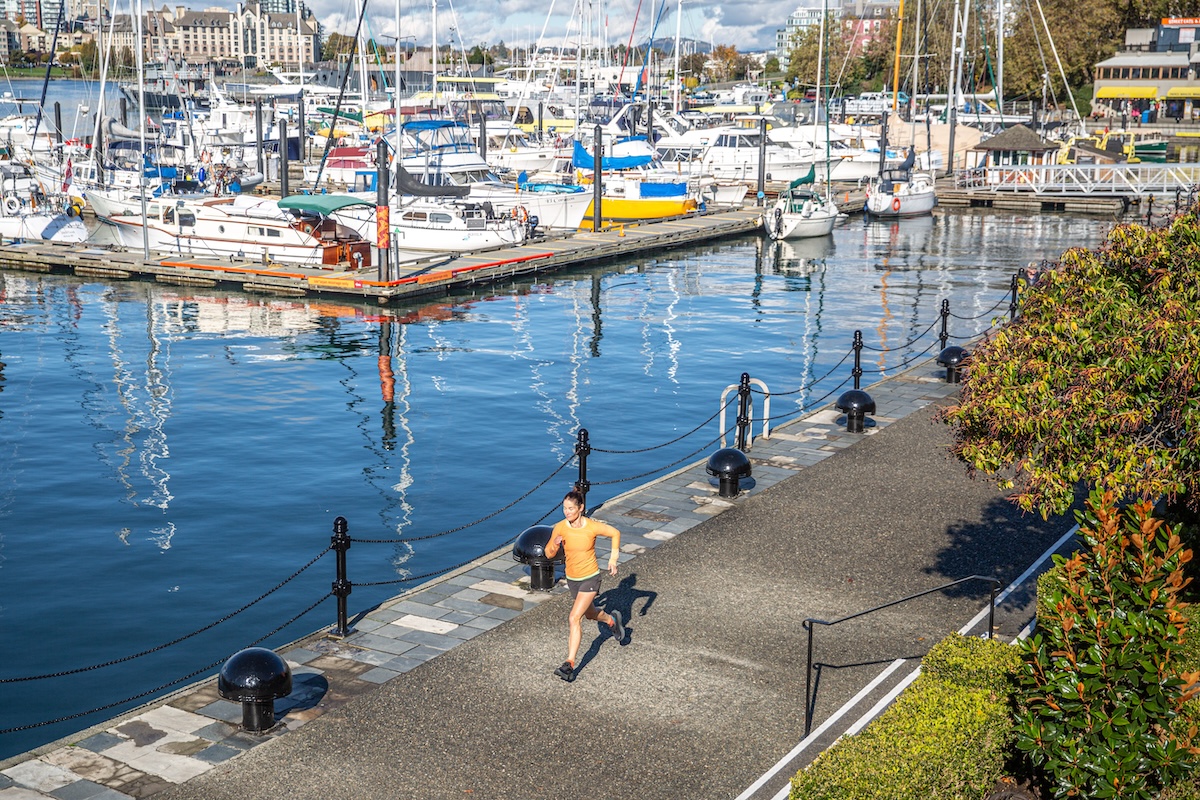
One of the age-old running shoe questions is when to retire your beloved pair of trainers. And while there are a range of considerations including your body weight, stride (heel strikers put more stress on the shoe), and terrain (pavement usually wears shoes down faster than dirt trails), there are some key guidelines to follow. To start, the loosely agreed-upon total mileage for when the midsole and cushioning of a quality running shoe should break down is in the 300 to 500 range. The factors mentioned above can swing that number to either end of the spectrum, and some minimalist racing flats have even shorter lifespans. Other indicators that it’s time to go shoe shopping are if you start developing new aches and pains in your knees, ankles, or feet, or if the shoe’s outsole is wearing down.
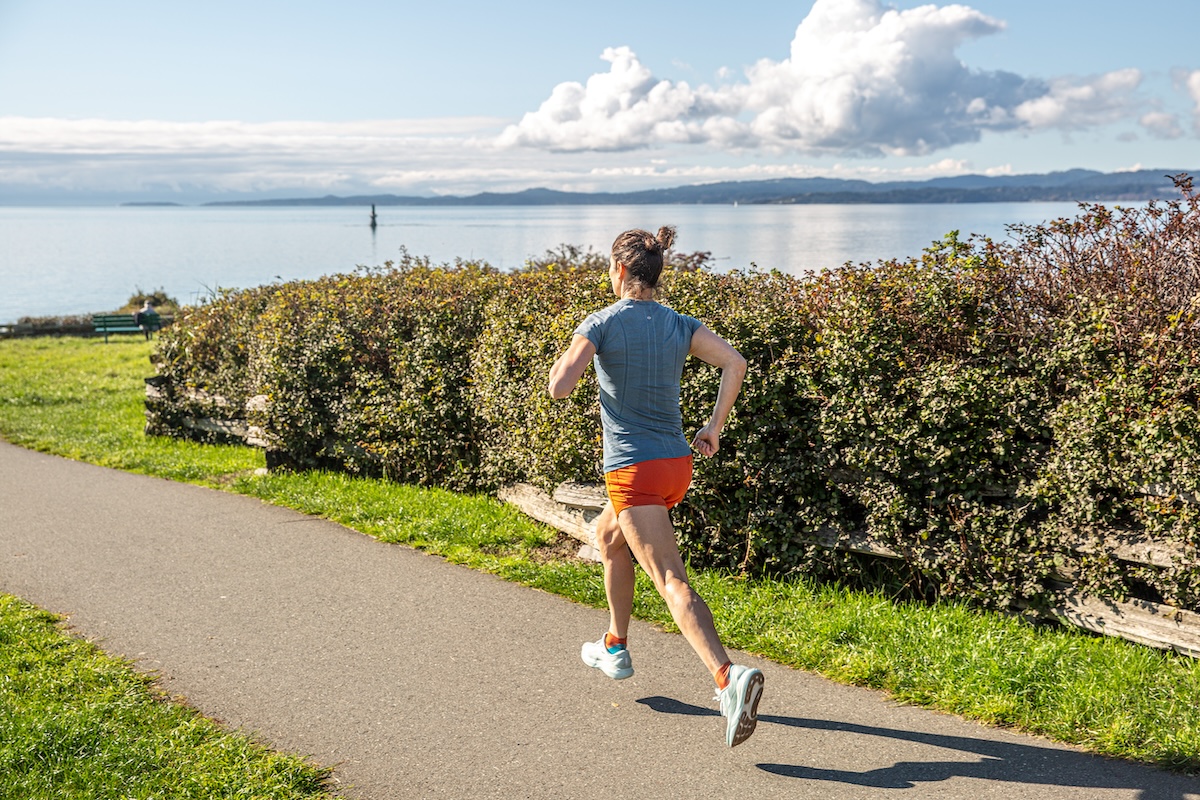
Most of the shoes listed above are the most recent editions (at the time of publishing) that are widely available through various online retailers and local brick-and-mortar shops. But rapid turnover in the running shoe market means that you can sometimes save money by purchasing a prior-generation shoe. The same often goes for your local running store, although you may have to ask if a past-generation model is available. If you do decide to go this route, you’ll need to be mindful of any potential tweaks to the design between generations. Many changes are minor, while others can have a big impact on fit and performance such as widening the toe box or full-scale redesigns of the upper and foam. When it comes to running shoe updates, keep in mind that newer isn’t always better. Finally, it’s important to understand that long-term availability is unpredictable with discontinued styles, so if you love a specific model, it’s a good idea to stock up with a few pairs while you can.

Despite their obvious similarities, road running and trail running are two vastly different disciplines that require their own unique set of gear (namely, shoes). As we mentioned above, road running shoes are generally lighter and more streamlined, emphasizing speed and responsiveness. On the other hand, trail running shoes have beefed-up materials, including more durable and protective uppers, increased midsole support (read: stiffer builds), and high-traction rubber that extends the lifespan of the sole. Using a road running shoe on technical trail will result in ripped uppers and blown-out soles (trust us, we’ve been there), while a trail running shoe will likely feel uncomfortable and overbuilt on pavement.

There are a few hybrid models that toe the line between the two worlds, including the Hoka Challenger 7 we pointed out earlier. But keep in mind that opting for such a versatile shoe will mean compromises on both ends of the spectrum (there unfortunately isn't a perfect shoe for all conditions and types of terrain). For a breakdown of our top picks for off-road exploration, check out our article on the best trail running shoes.
Back to Our Top Running Shoe Picks Back to Our Running Shoe Comparison Table